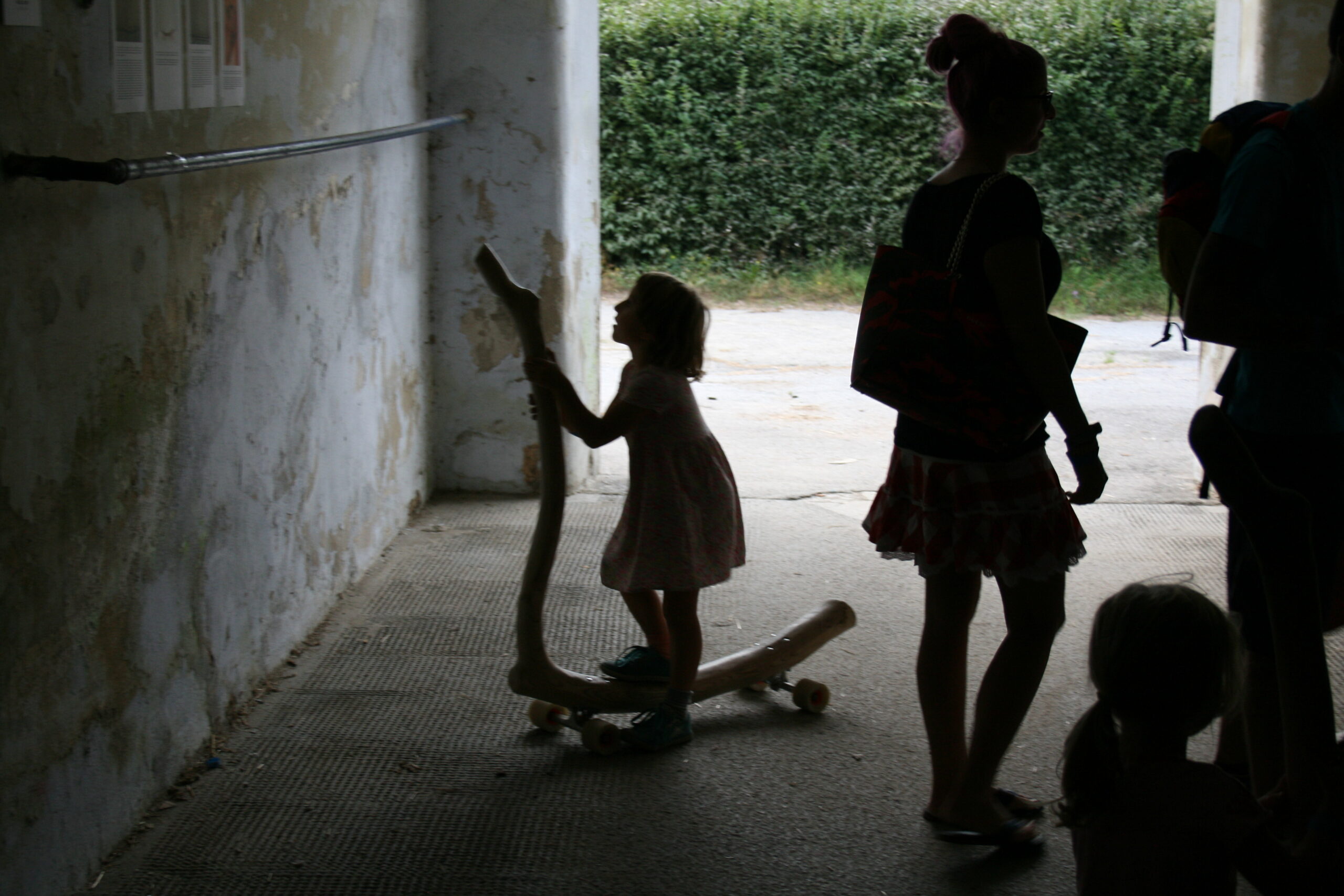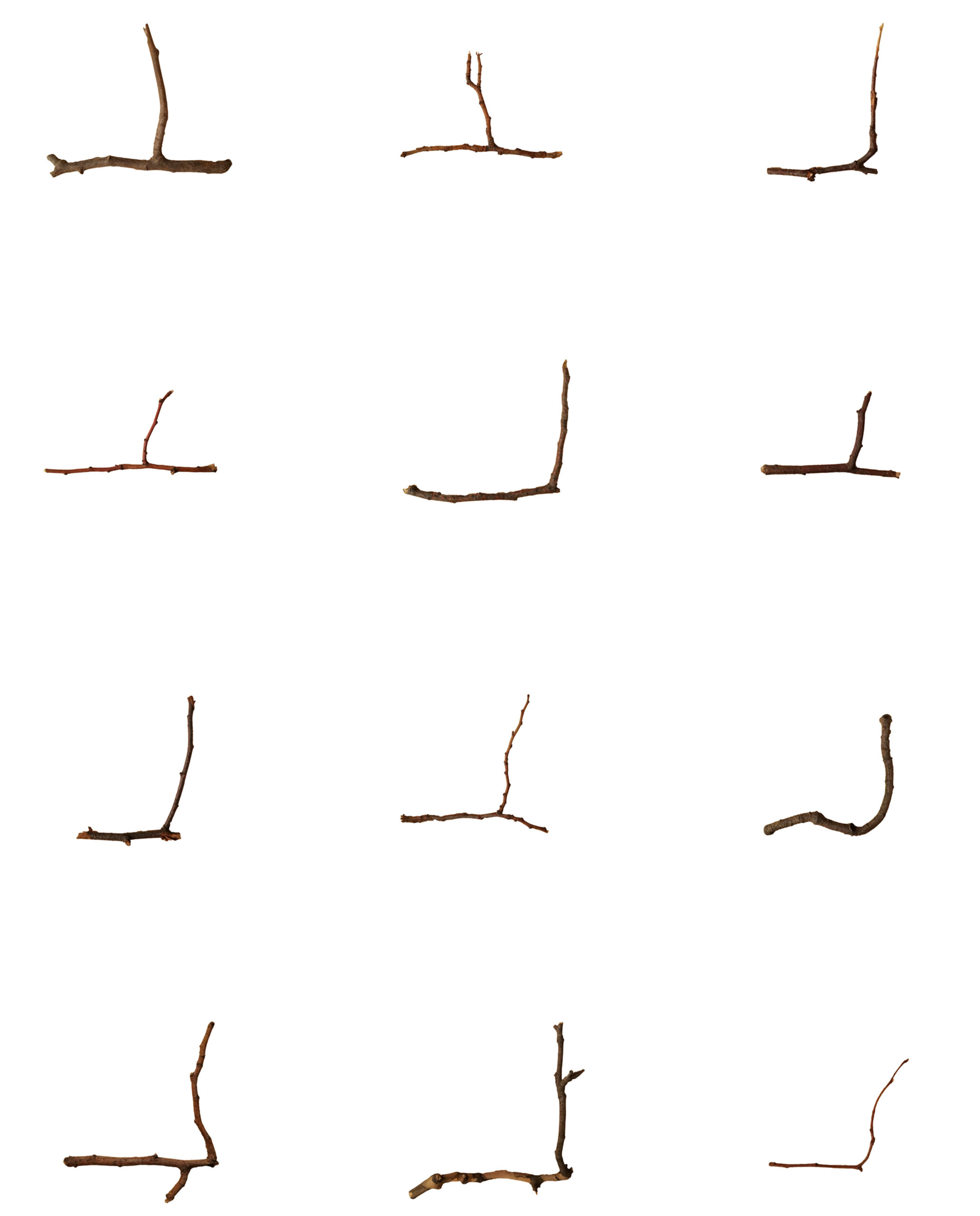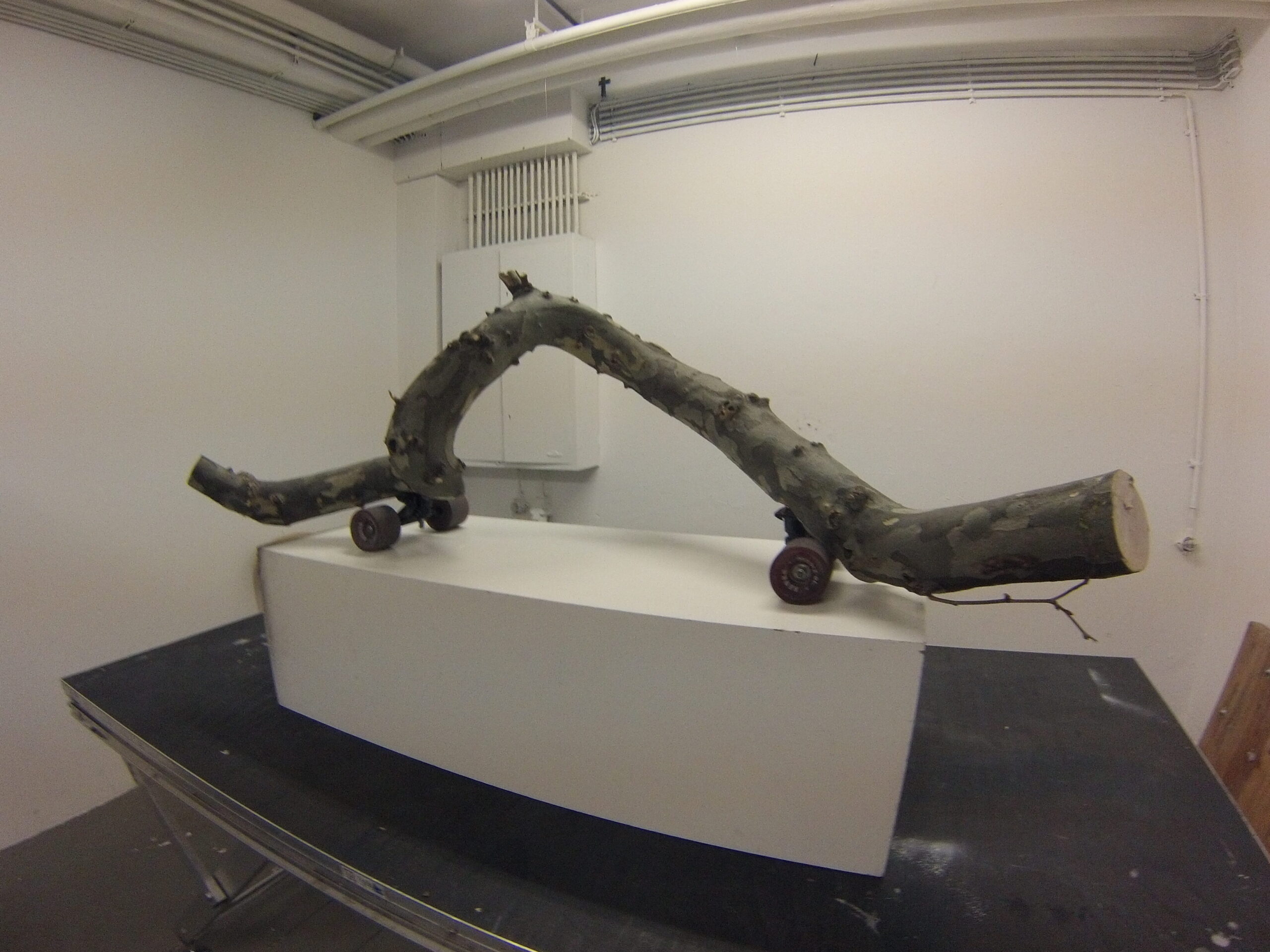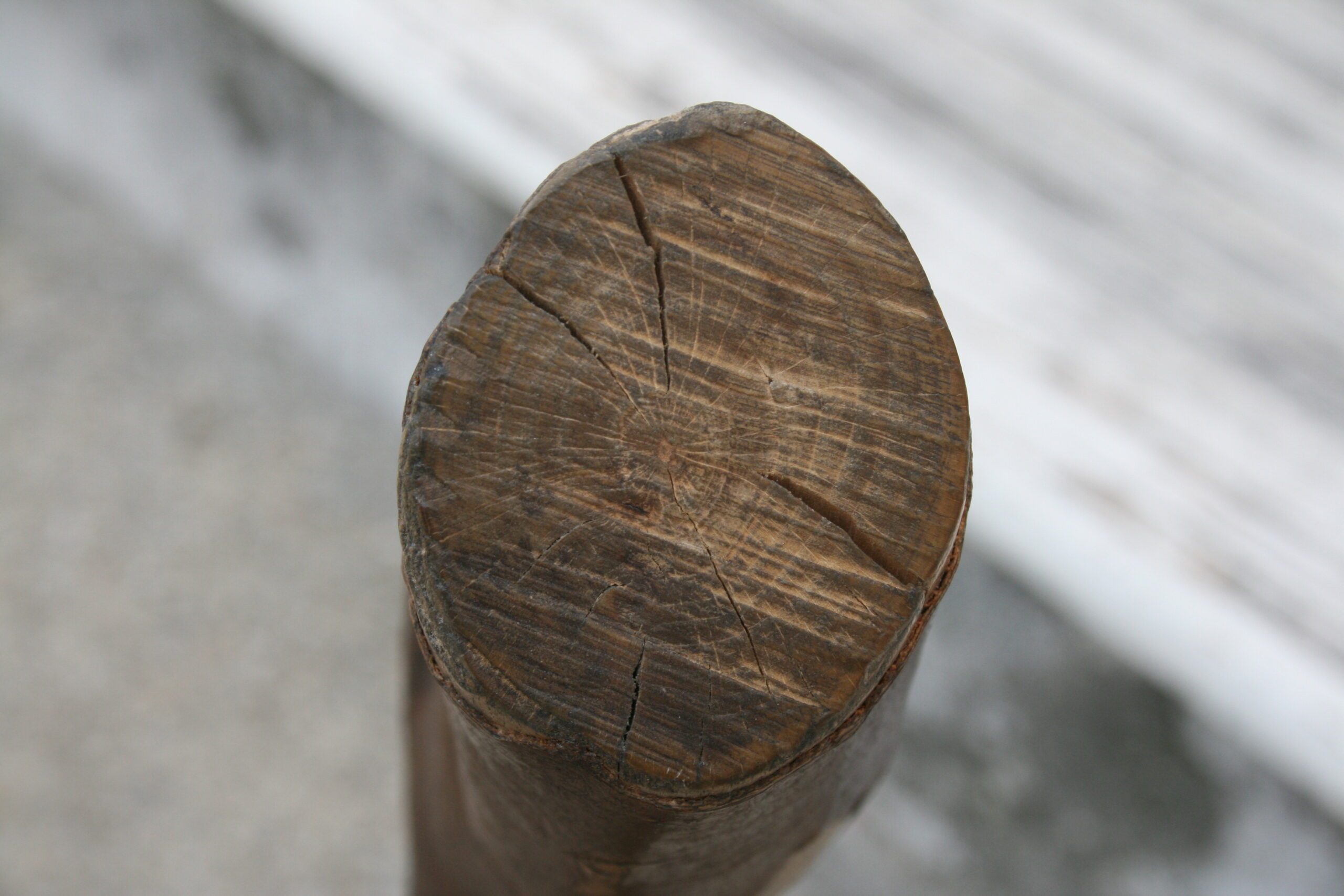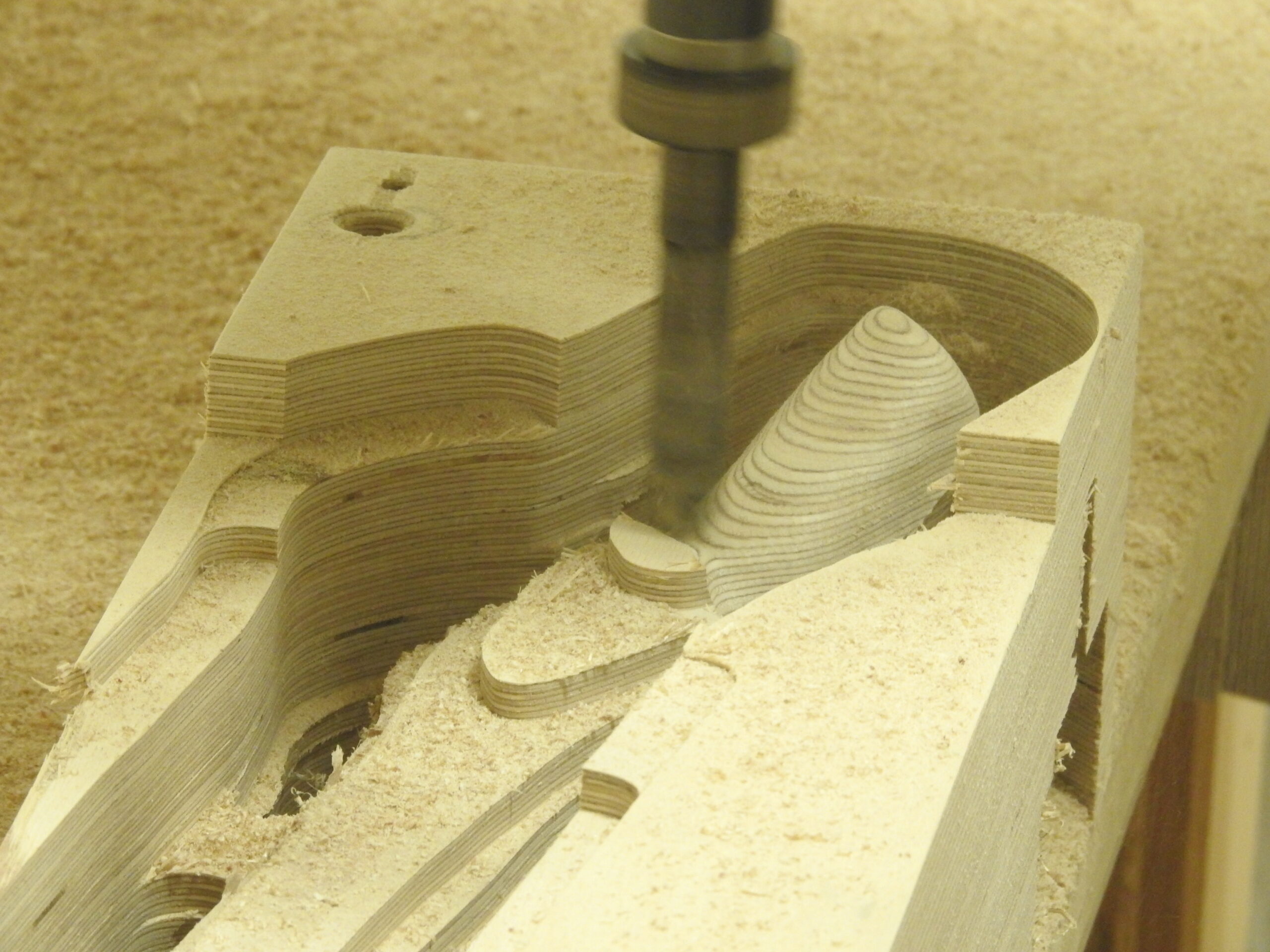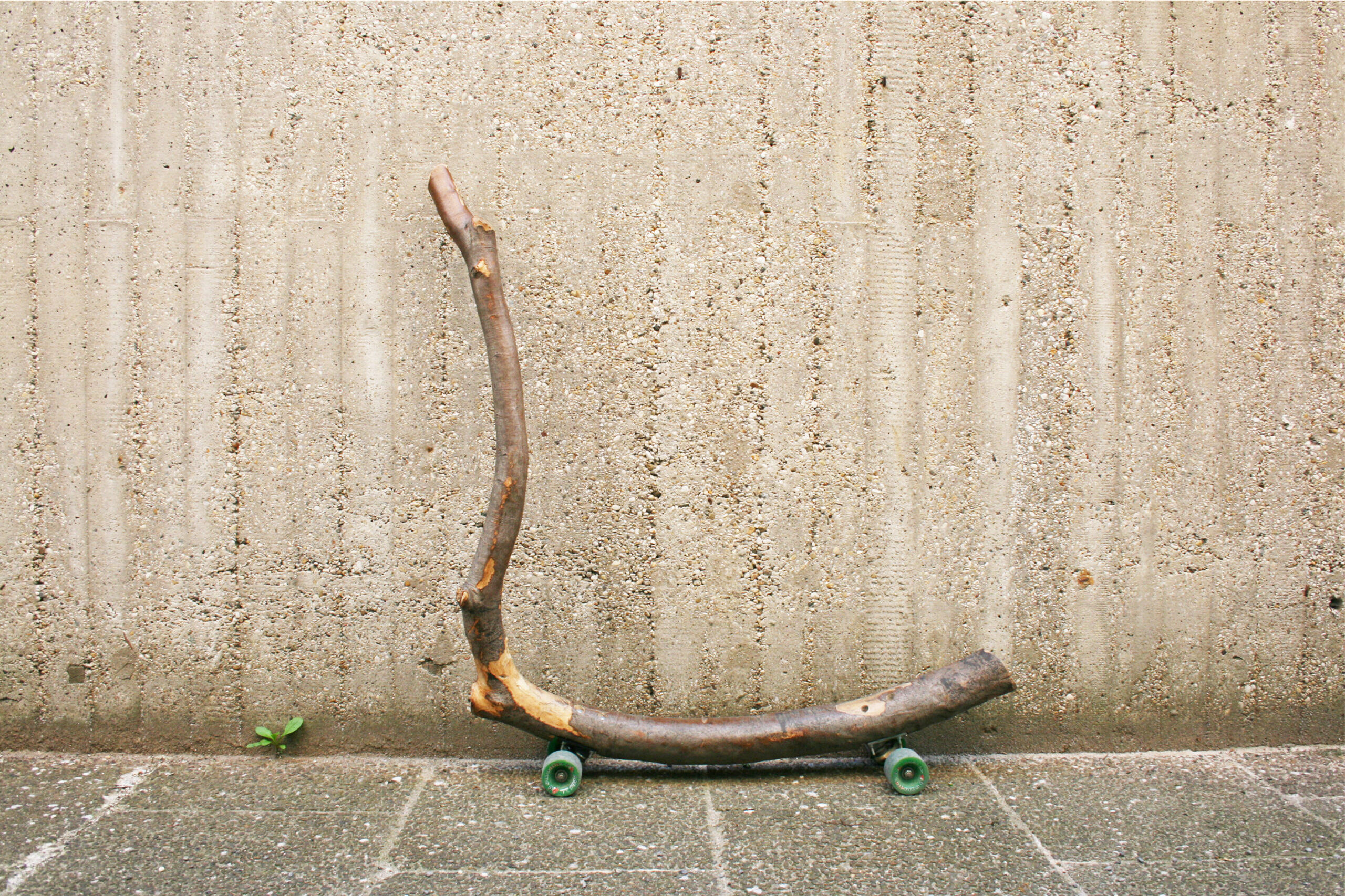
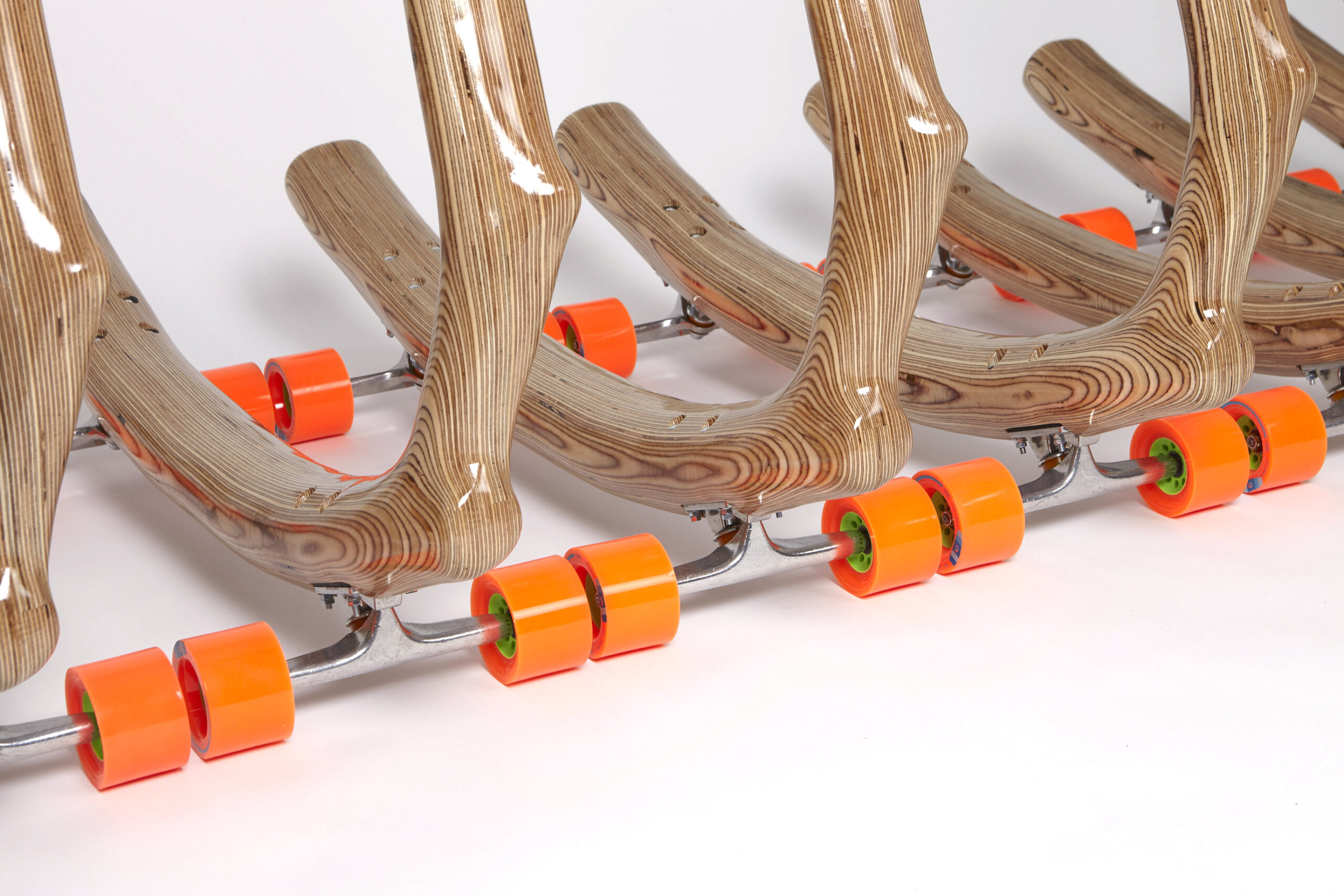
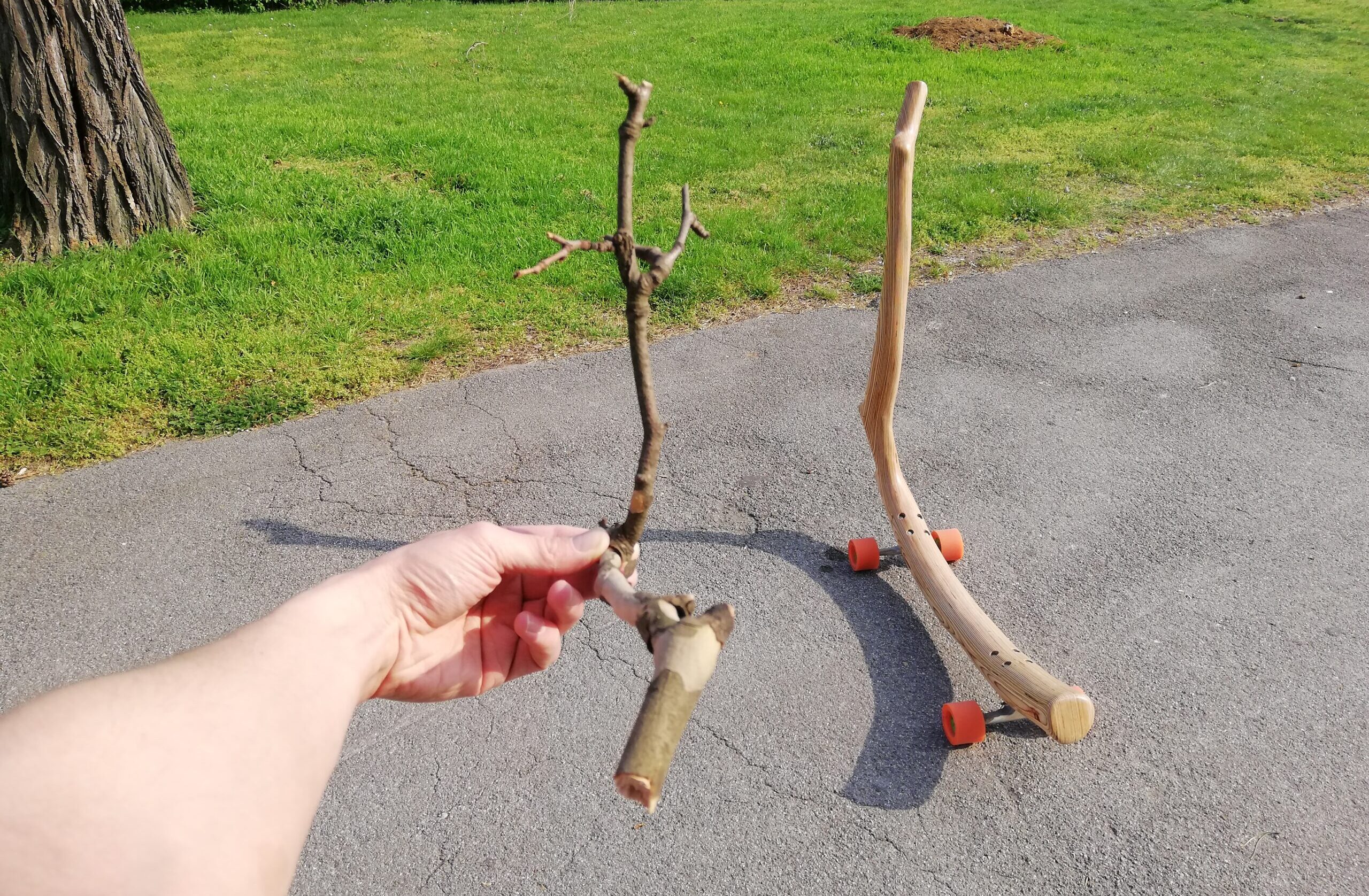
1. Natural Grown: Naturally grown branches and the Branchboards created from them, in their original size, belong to the first type or the most rudimentary category of Branchboards. Here, one can strongly feel the most primal and true qualities and characteristics of nature. Especially when they are minimally processed on the surface, it becomes noticeably tangible to the touch. You can even smell it, and over time, the signs of wear and tear become more visible. Depending on the type of wood, elasticity, weight, strength, and shape can change over time and through the drying process. Change and impermanence are also part of the equation. Some people also like to add modifications to their natural Branchboards. This involves working on the surface through sanding, carving, painting, or drawing, as well as installing additional elements such as metal reinforcements, cord-wrapped supports, or sometimes even integrated lights. All these factors make it even more special. Experiences that are individual and personal.
2. Mimic´s: This type/category consists of artificially created replicas of naturally grown branch shapes. For this purpose, a variety of different methods and materials can be used. The choice of materials can range from different types of wood to composites or even synthetic materials. Each material offers distinct advantages, whether it’s in terms of durability, weight, texture, or environmental impact. By experimenting with these various methods and materials, Mimics can achieve a balance between the natural aesthetic qualities and the benefits of modern manufacturing techniques and technologies. This category opens up possibilities for customizing the Branchboards to specific needs or preferences, whether for artistic, functional, or ecological purposes. It also allows for greater control over the final characteristics, such as strength, flexibility, and resistance to environmental factors, making it a versatile choice for different users and applications.
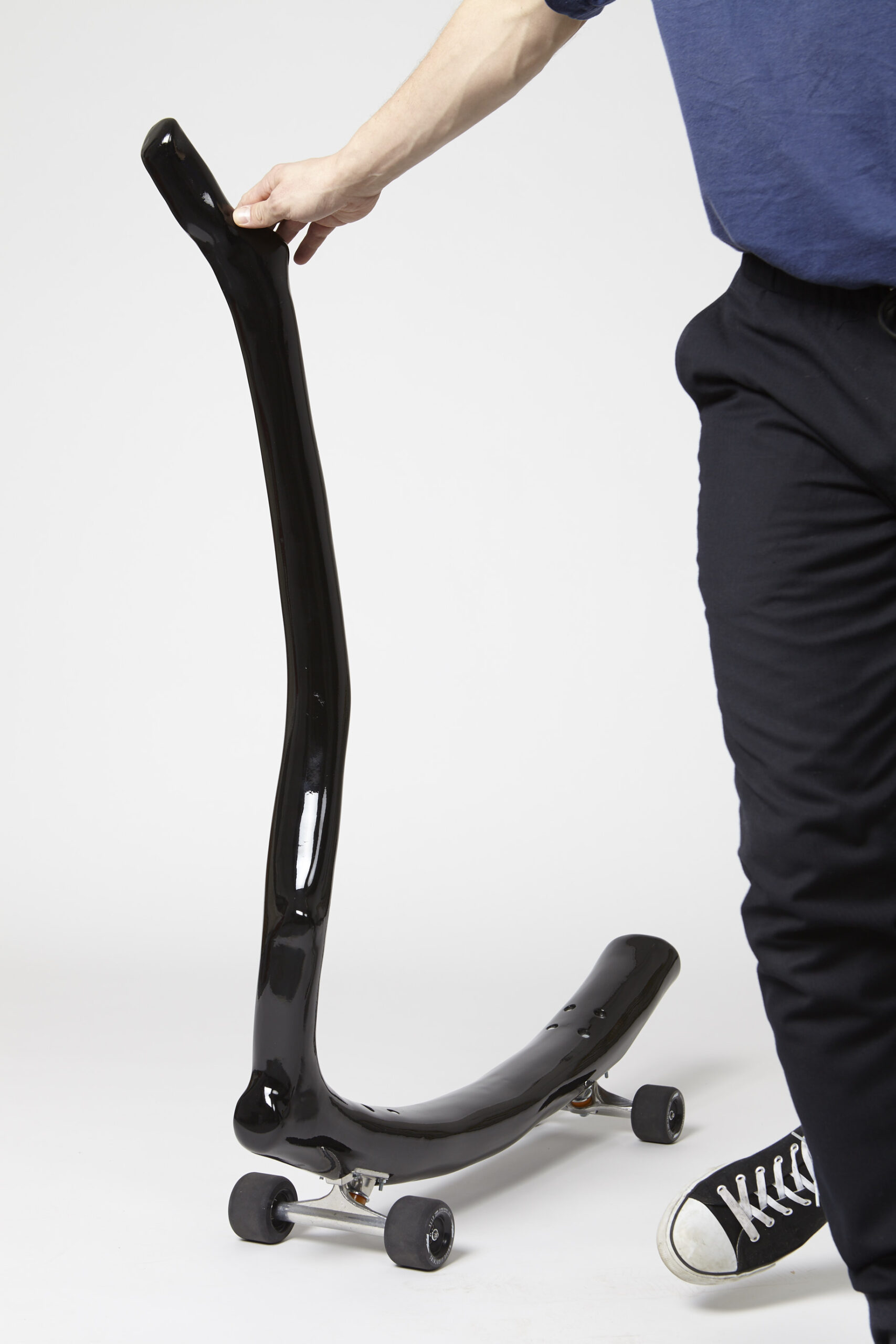
Natural Grown (Examples / Nico Rayf)

“The Origin”
2011, European beech tree, found at Egelsee/Krems an der Donau, weight: 8 kg, length: 106 cm, height: 115 cm, width: 27 cm including wheels, diameter: top 6 cm, bottom 9 cm, distance between the trucks: 60 cm (It was/is possible to take it as sports luggage on an airplane).
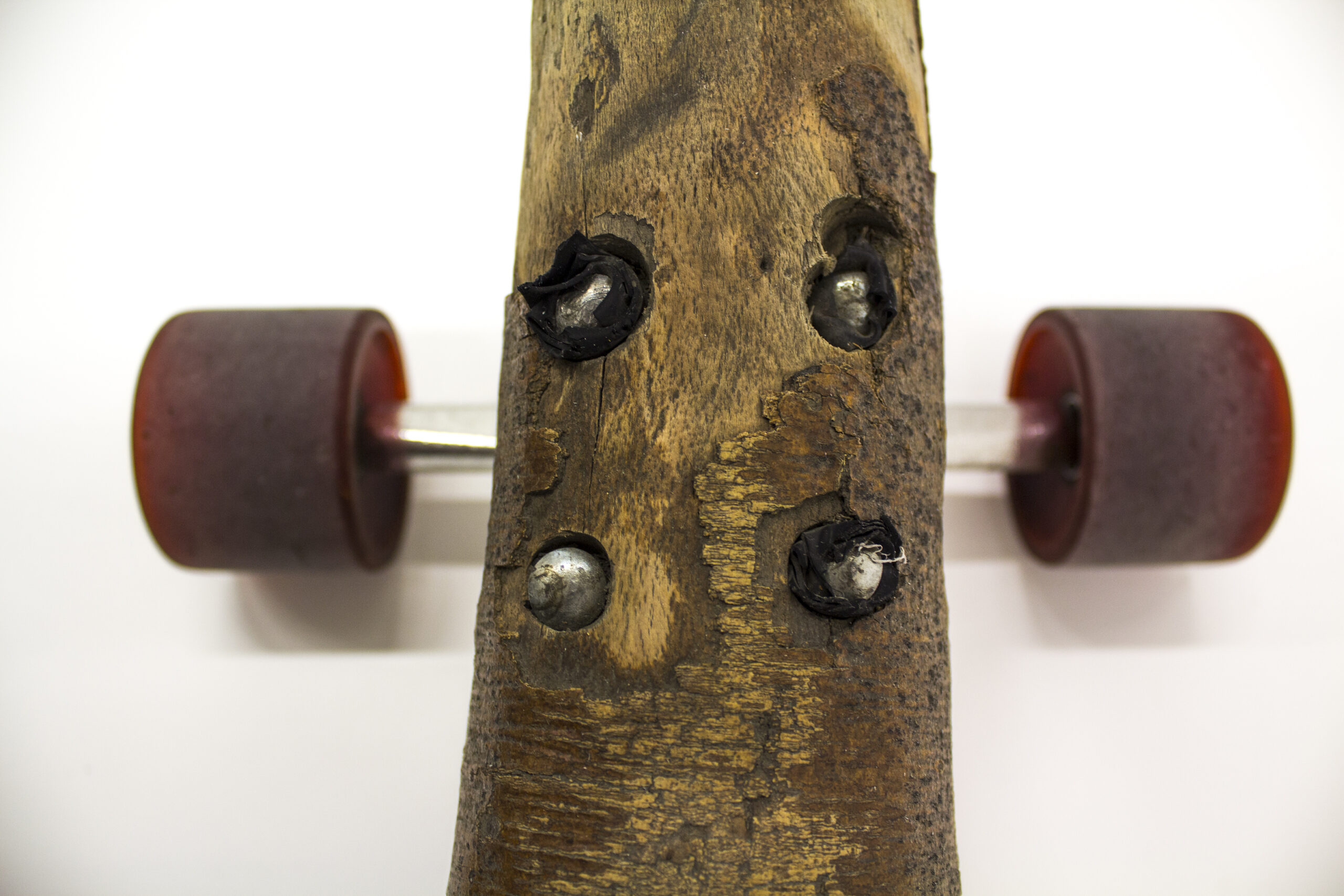
The spaces for the trucks were cut with simple tools such as axes, saws, and files. During the first days, I fixed it with narrow skateboard trucks and small wheels, which were a gift from a friend, using normal wood screws. After the first ride, I was surprised by how well it ran. After this, I noticed that the screws were coming loose due to the vibrations, so I decided to use bolts that go through the wood instead. I also switched to large longboard wheels. The branch was deliberately not painted or varnished to observe the natural process of decay. After four years of continuous riding in all conditions and seasons, cracks started to appear due to the drying process. Some areas of the surface have been polished by the direct contact of gripping, making them shiny. Numerous crashes have also taken their toll in the form of chipped bark, scratches, friction points, etc. ,… (Nico Rayf)
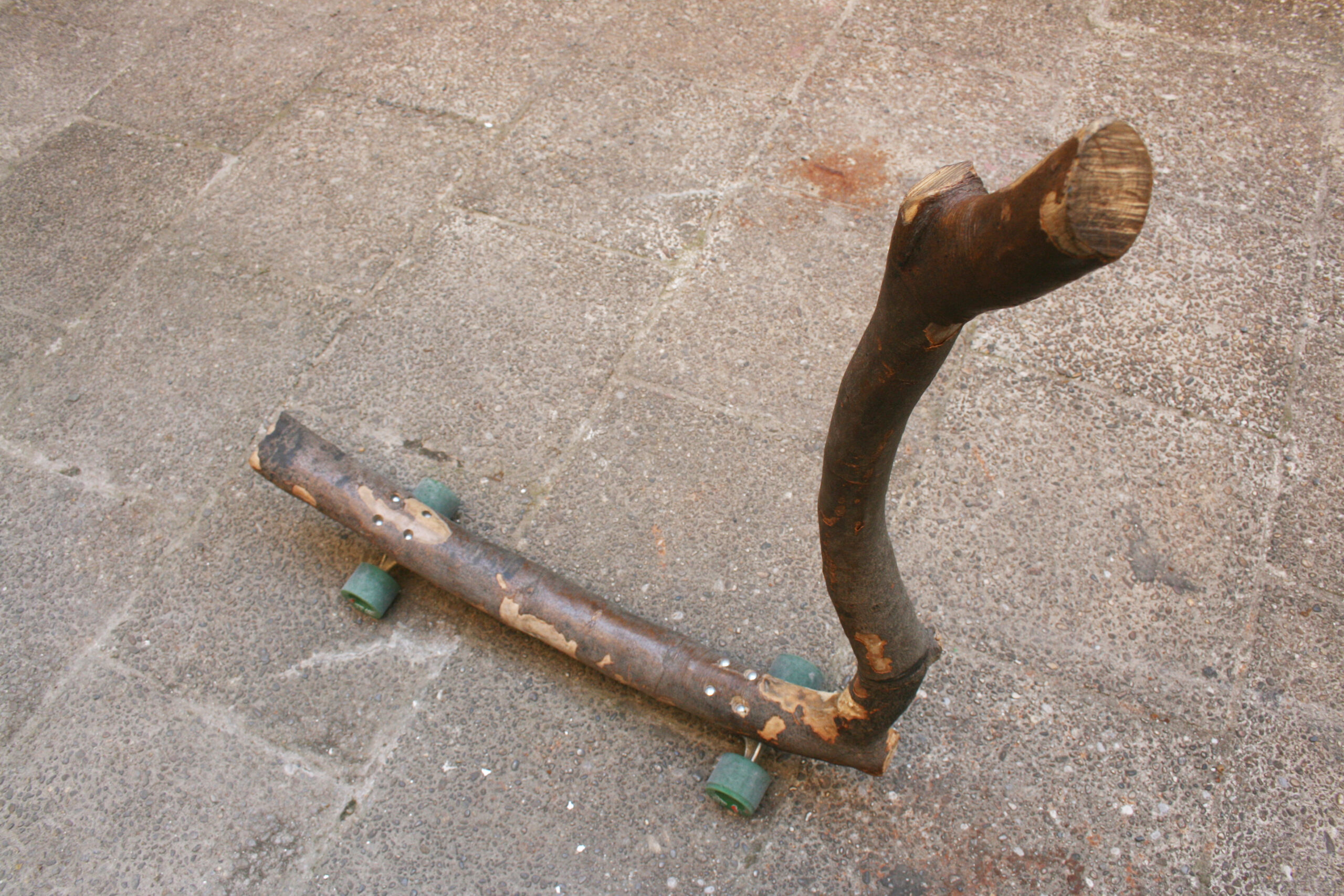
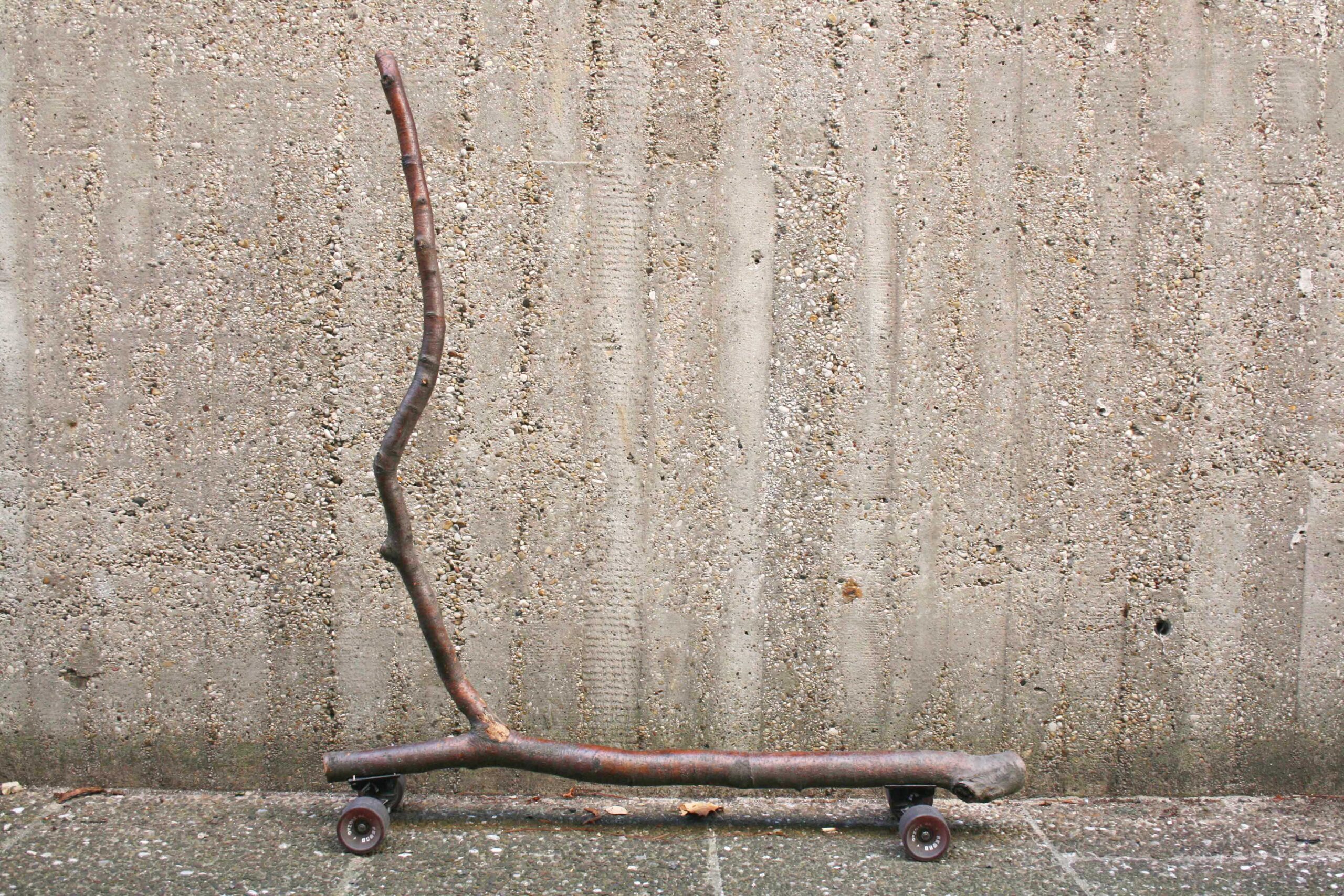
“Skinny”
2011, Cherry tree, found in Lainzer Tiergarten, Vienna, weight: approximately 3 kg, length: 110 cm, height: 120 cm, width: 25 cm including wheels, distance between trucks: 75 cm
This branch was very thin and elastic. One could jump on it, like a trampoline. The top had a diameter of about 3 cm, and the bottom was roughly 6 cm. I really enjoyed balancing on the skinny, round surface. The trucks were mounted with wood screws, which repeatedly required tightening. At first, the distance between the trucks (75 cm) made it difficult to jump onto the curb, but after a while, I learned how to handle it. The lightness of the branch gave me a feeling similar to that of gliding on water while always knowing that such a fragile branch could break any second. Being in this state of concentration and focus is irreplaceable for me. One day, I pulled the grip back so hard that the branch broke, and I crossed this threshold, thus experiencing the transience of the branch. The top part (roughly 1 m) remained in my hand, while the rest took off from under my feet, between the cars, in the middle of the street, until it came to a halt on the other side of the road. Since I was aware from the beginning that this would happen at some point, I was not sad or disappointed. My feeling in this moment was more one of accomplishment and liberation. I also knew that I will, of course, find another branch and use the same Trucks and Wheels on it. ,…. (Nico Rayf)
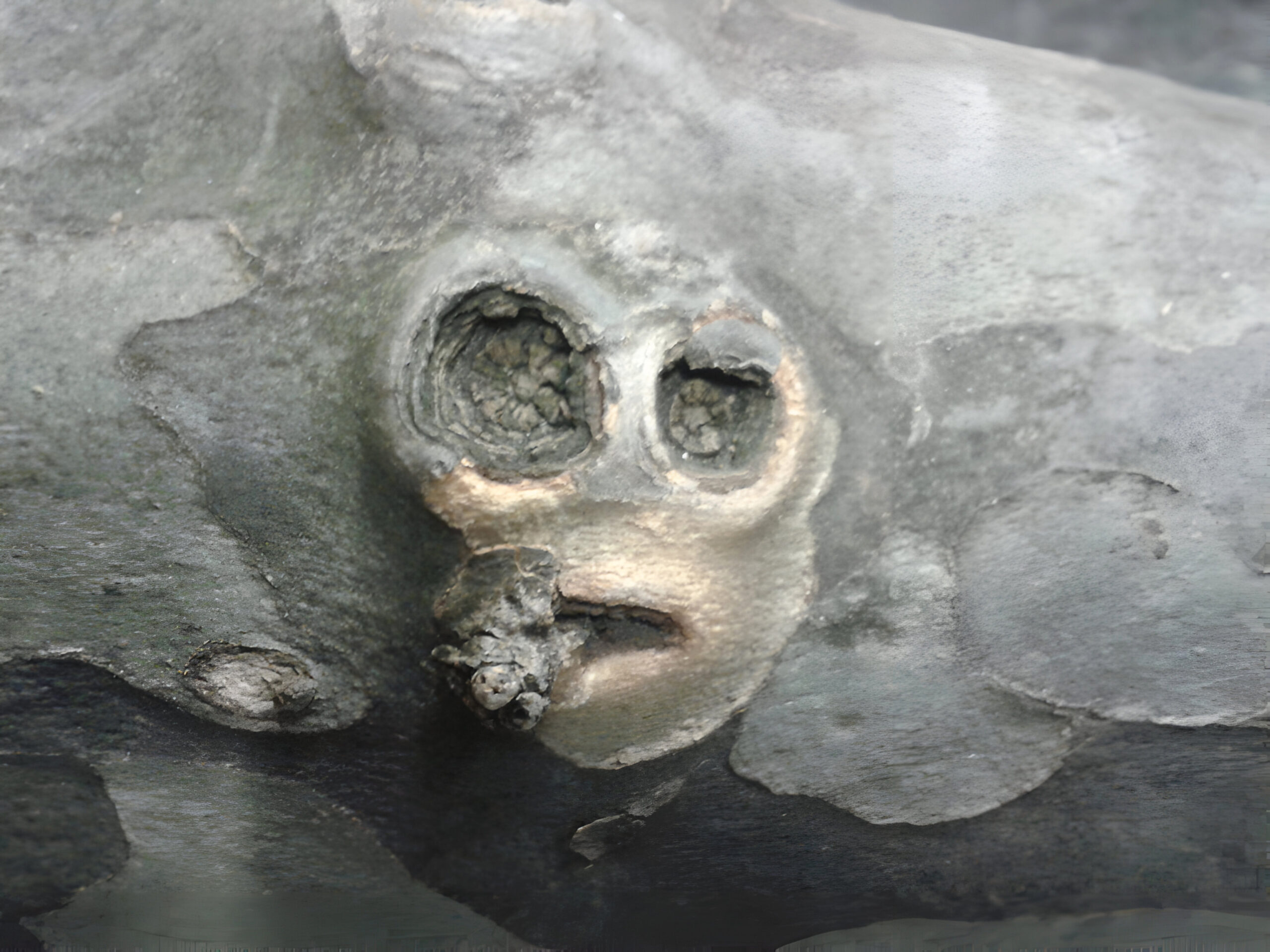
“The Monkey”
2013, Plane tree, found in the courtyard of the University of Applied Arts, Vienna, weight: 15 kg, length: 140 cm, height: approximately 50 cm, width: approximately 60 cm, distance between the trucks: approximately 70 cm.
The name came from the monkey-like face that was naturally grown on it. And maybe also how I felt and looked riding it (like a monkey). The shape of this branch was very different from that of its predecessors. It was closer to a longboard, on which one would stand with spread legs and no longer a scooter that one could grip in the front. Once you were standing on it, it was almost impossible to push to keep going. It was actually more of a downhill-tank. ,… (Nico Rayf)
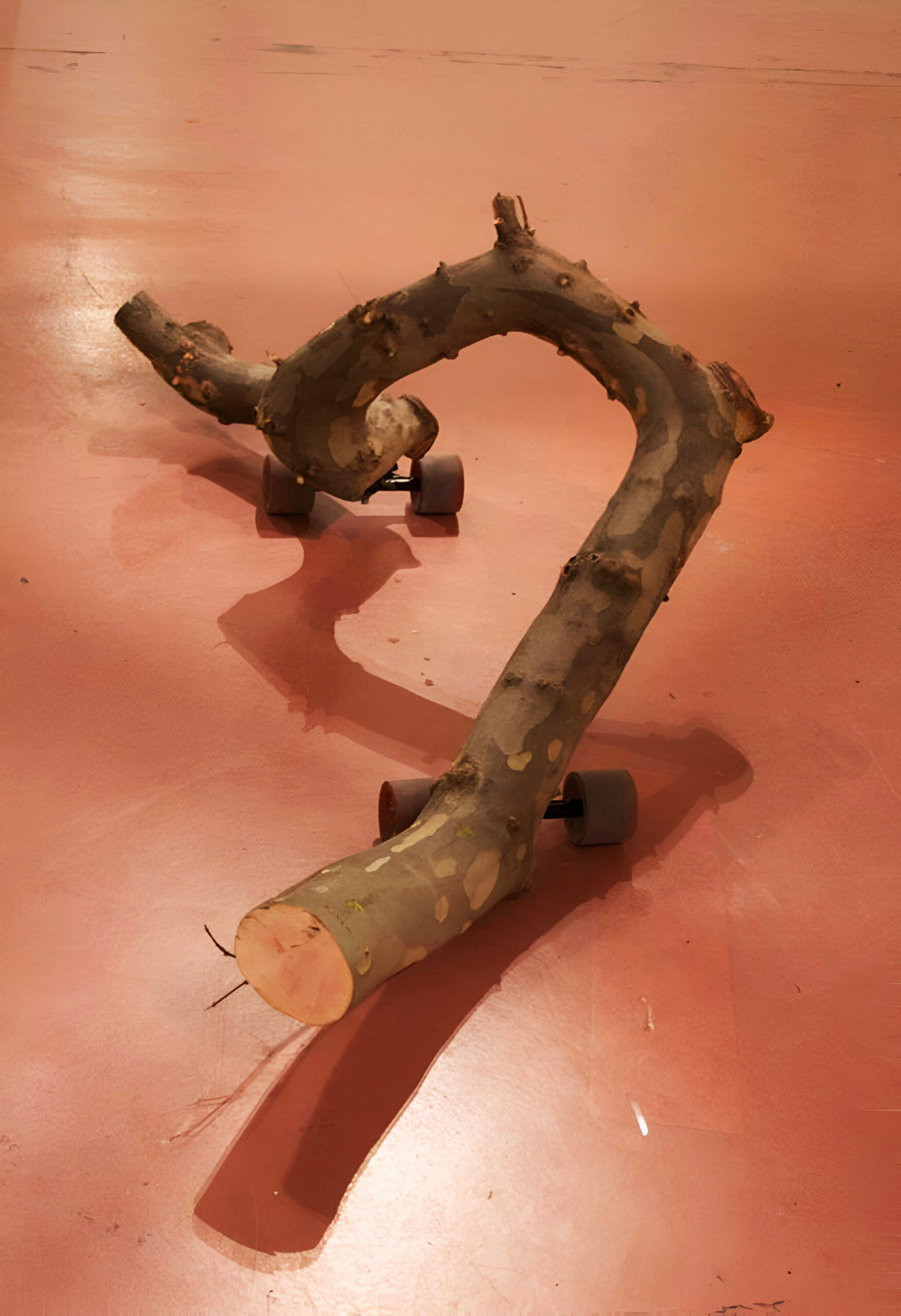
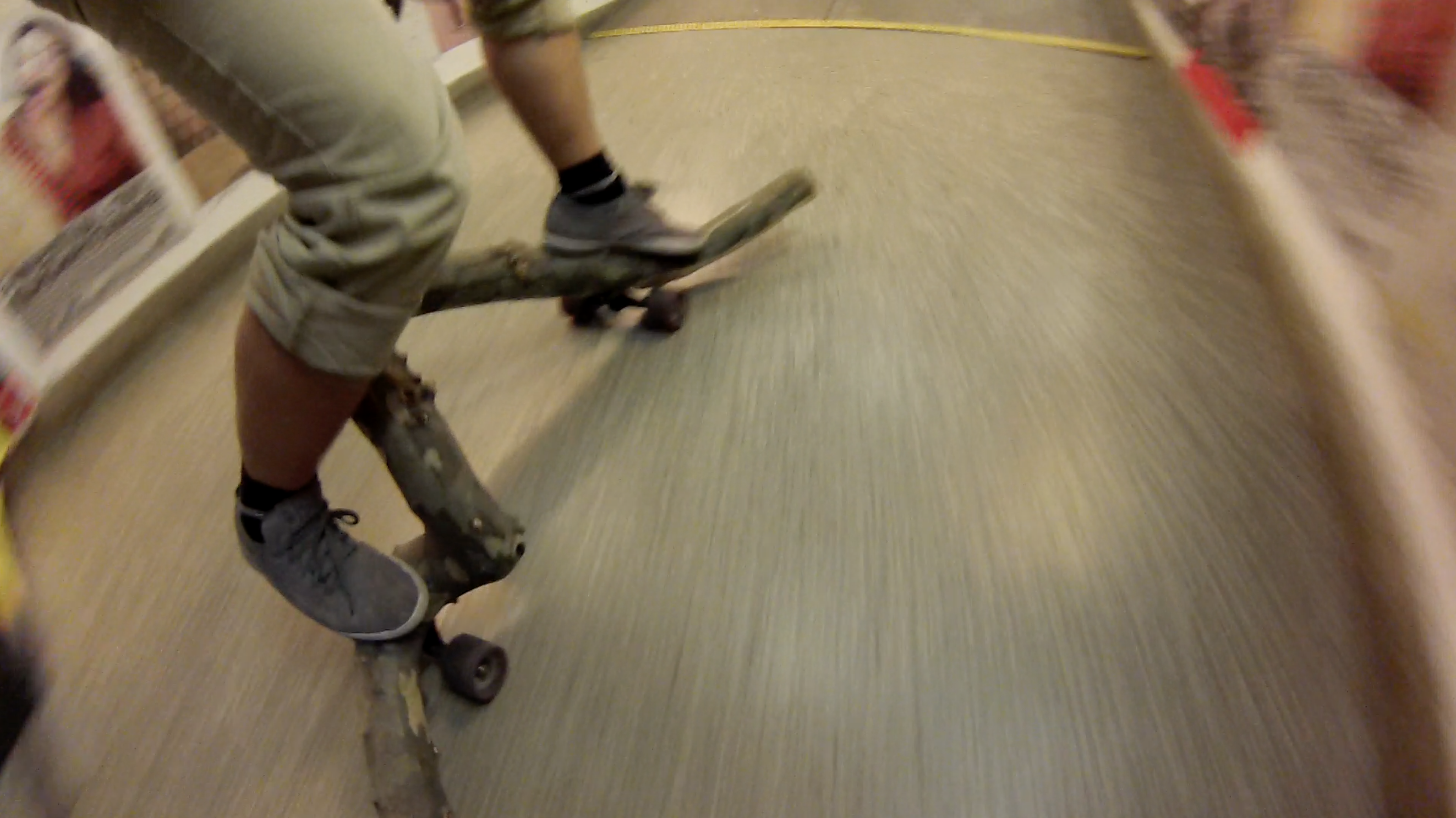
Mimic`s (Prototypes 2013 and 2015)
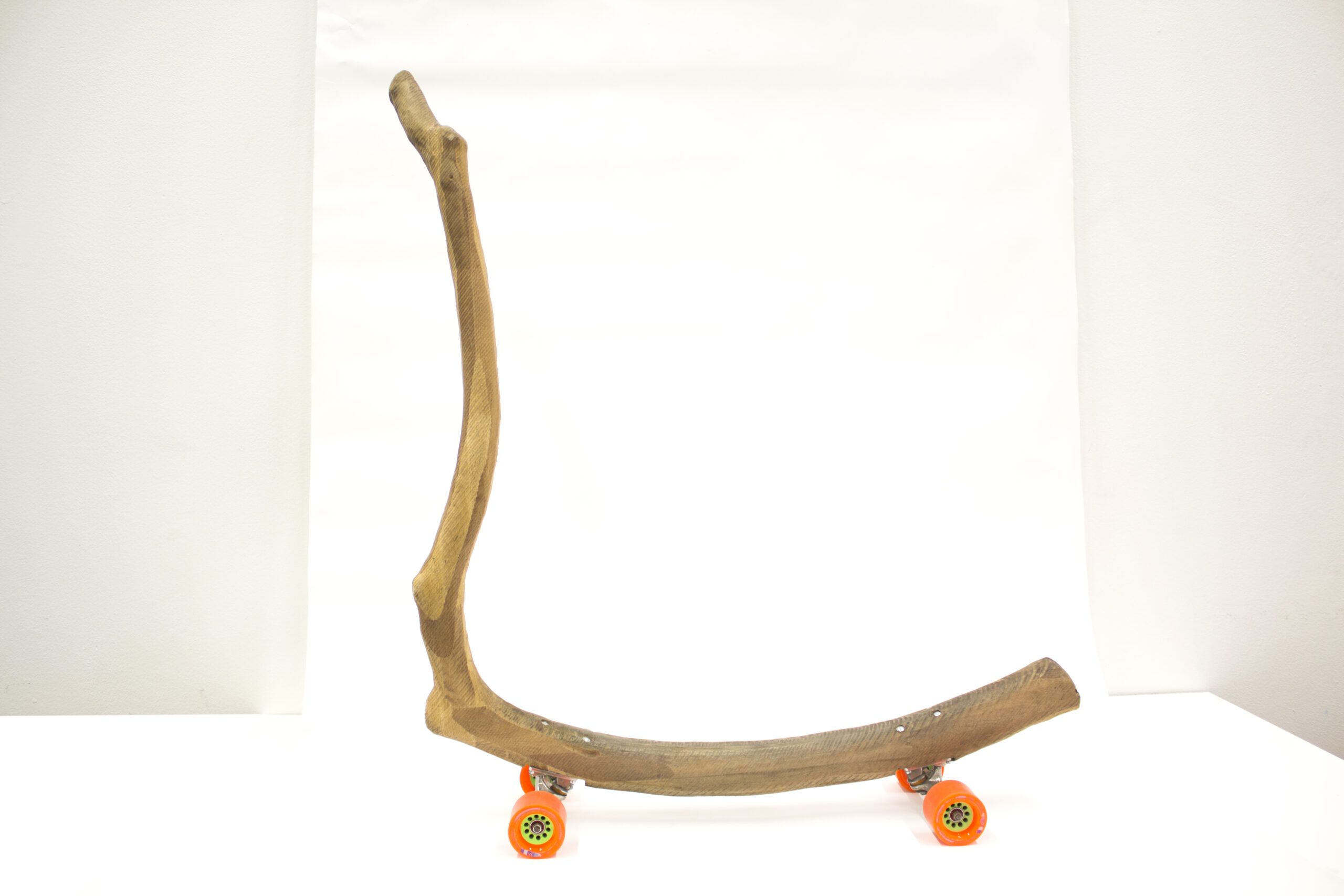
“The Clone”(Prototype 2013)
In 2013, layered boards-beech, weight: 8 kg, length: 106 cm, height: 115 cm, width: 27 cm including wheels, diameter: top 6 cm, bottom 9 cm, distance between trucks 60 cm. First, a 3D model was created, which was then cut out of laminated beechwood plates in an L-shape, using a CNC milling machine.
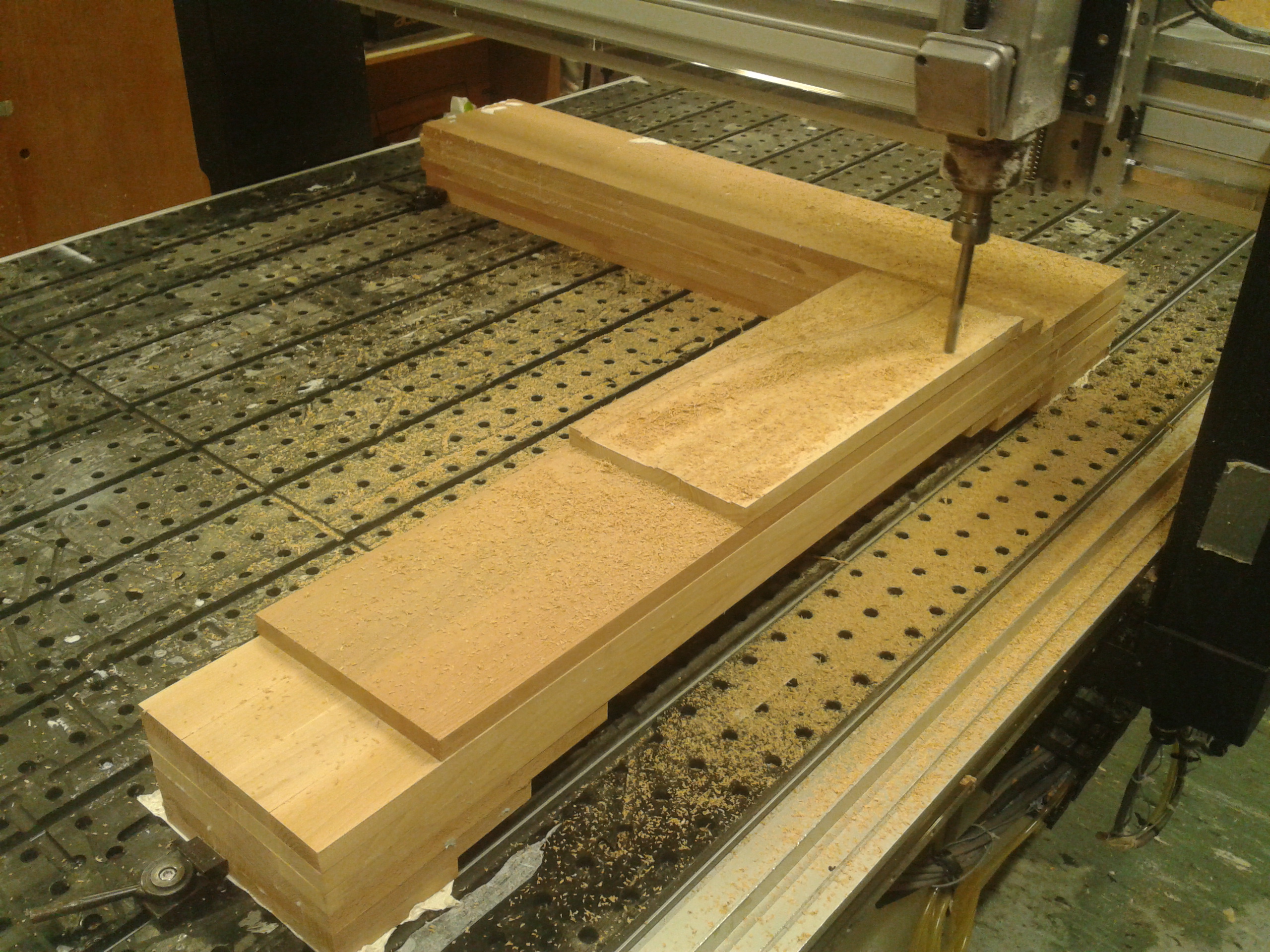
The shapes were then sanded and treated with wood oil. The process required roughly 60 hours of work, consisting of 20-30 hours of scanning, modeling, and machine preparation, 6 hours of cutting and laminating, and about 24 hours of milling.
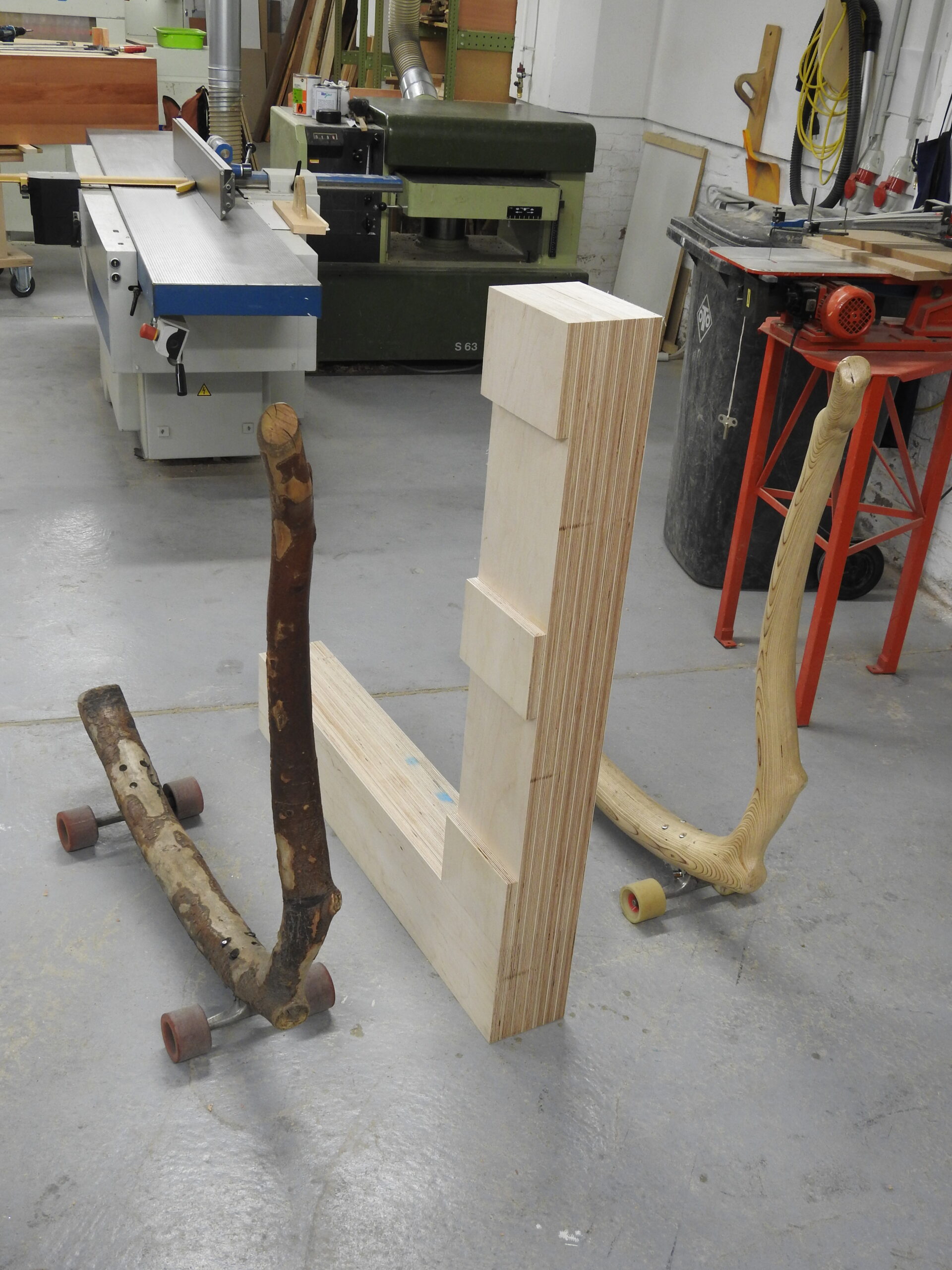
The prototype was produced at the University of Applied Arts, Vienna
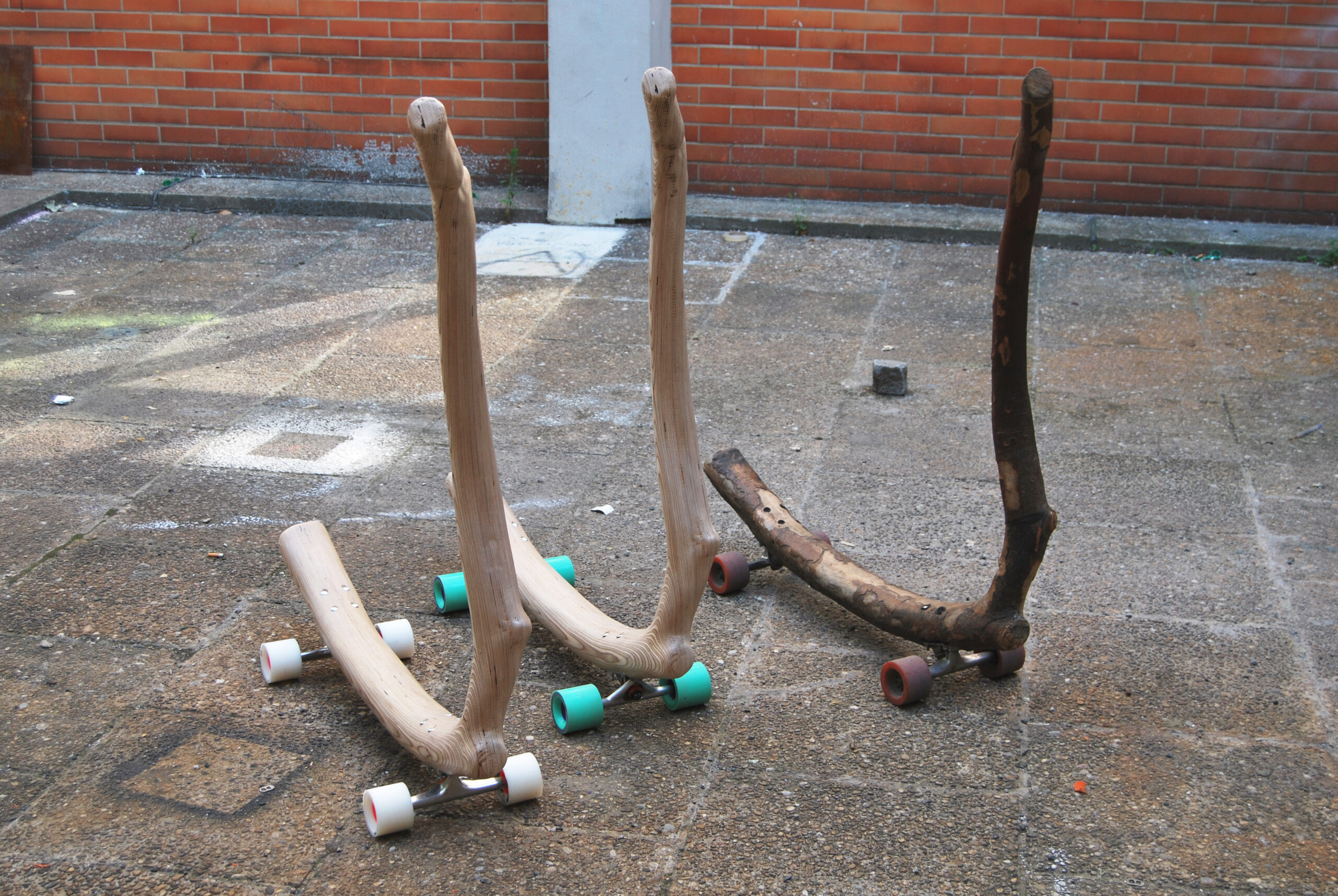
“The Clone” (2nd Generation Mimics / Test Edition 2015)
In mid-July, 3 objects previously commissioned at a carpentry were completed. They consist of 3mm layered birch boards, and are more flexible and also 1 kg lighter than beech wood. The surface was roughly sanded so that the milling machine traces were still noticeable (visually and haptically).
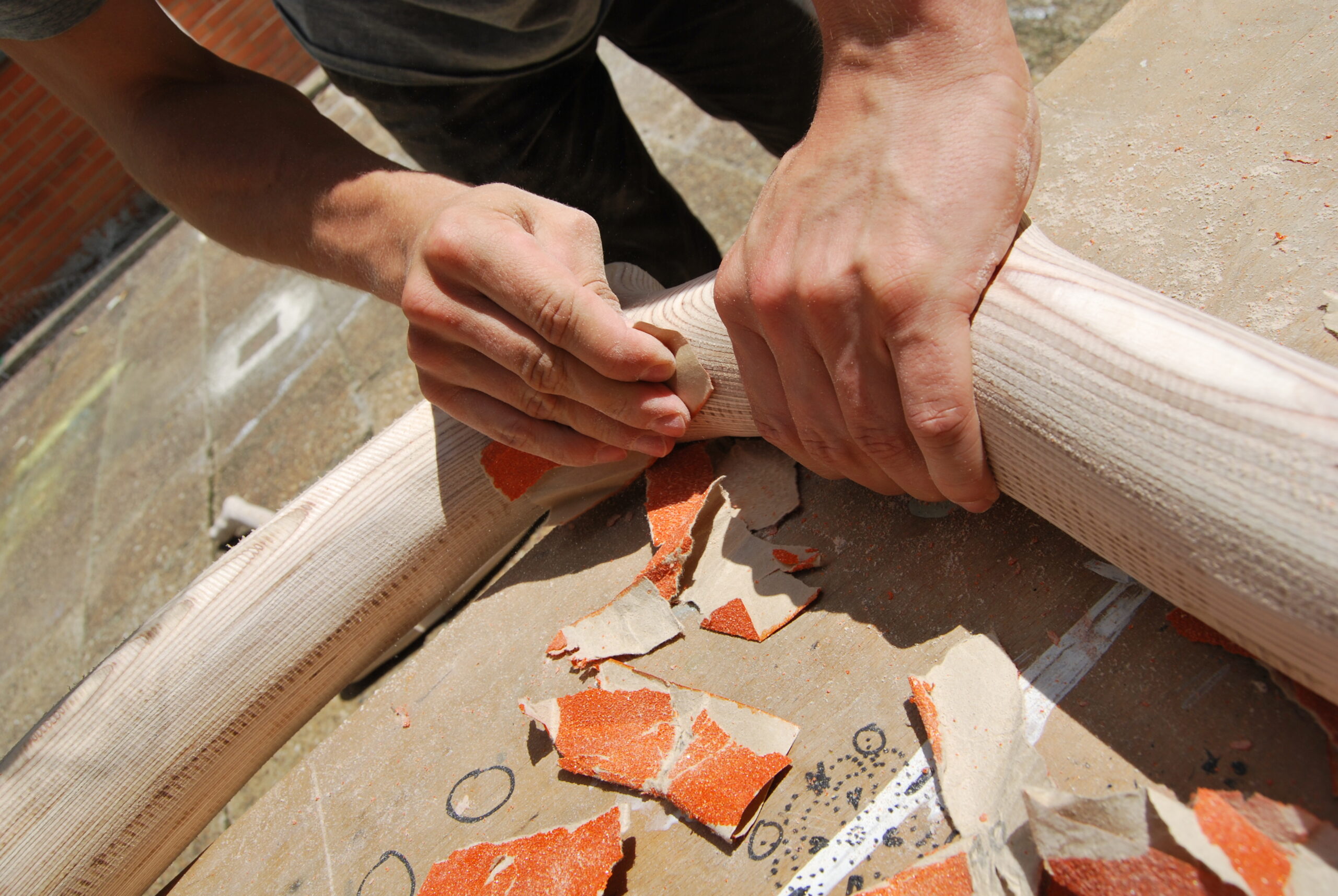
The objects were also coated with waterproof varnish.
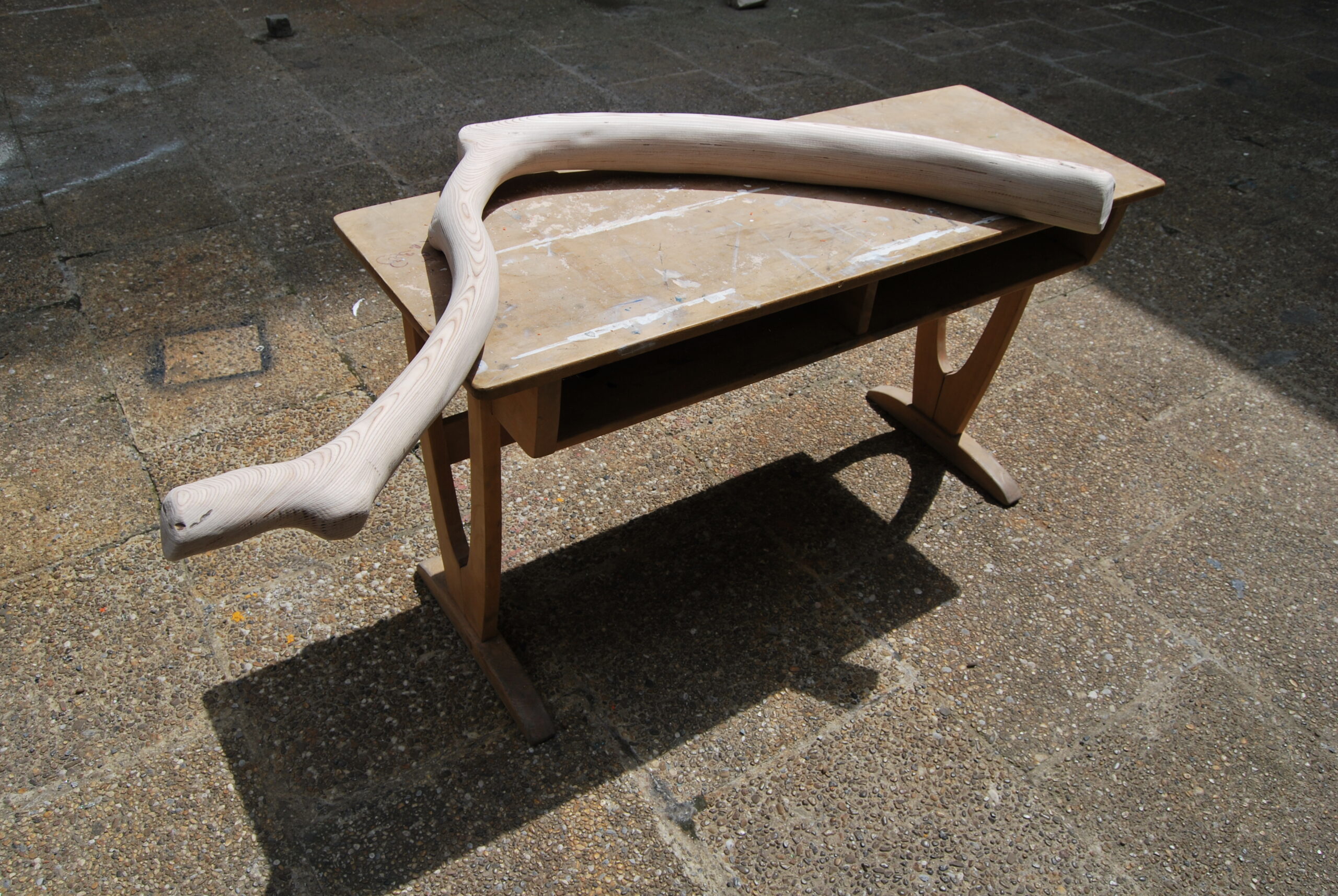
The 3 Branchboards were intensively tested by experienced skateboarders. These models are extremely strong and stable.
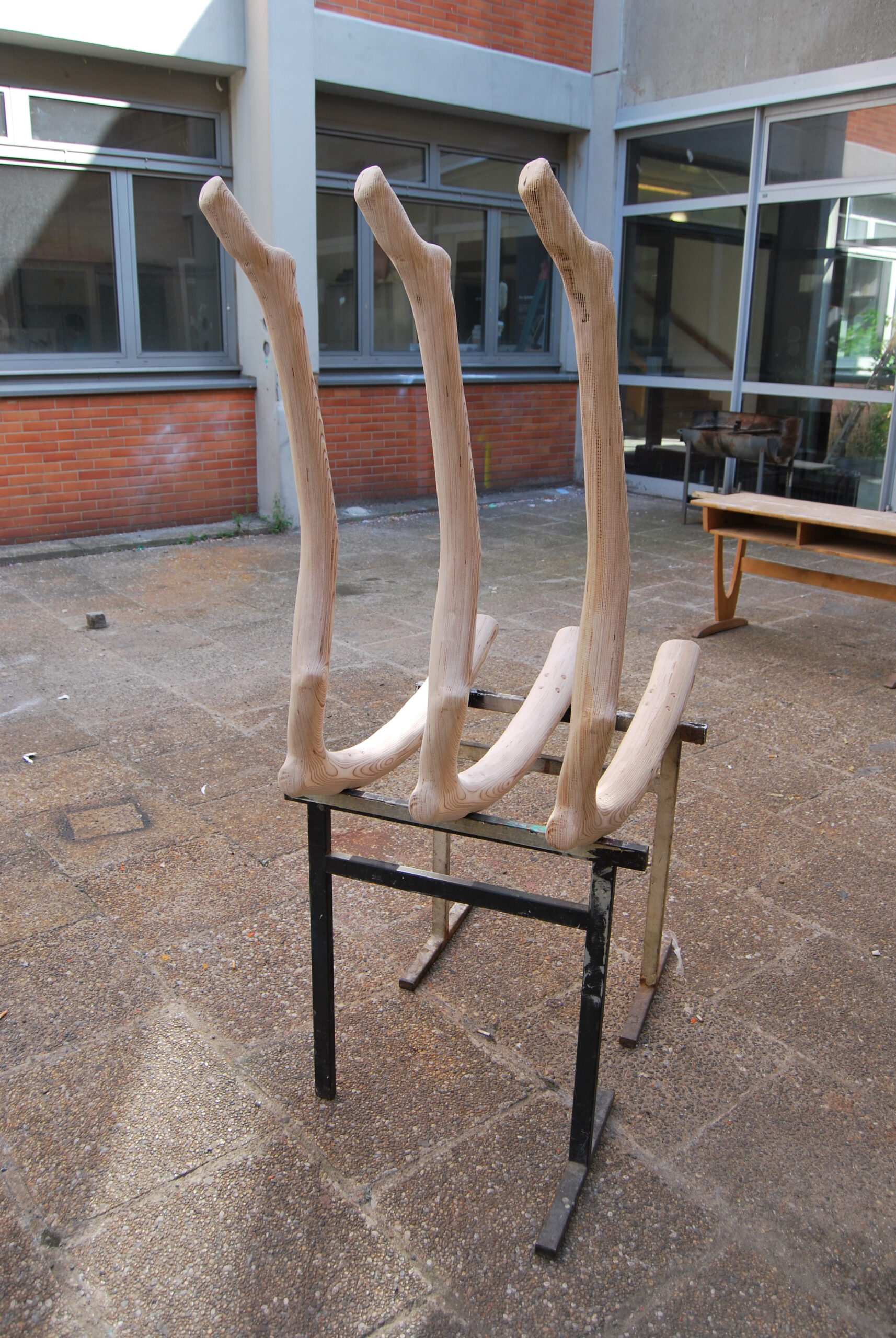
Riding three same Branchboards at the same time together through the city was a very special experience. The dynamic between us in the group was very special but also for the people on the streets, it has a performative element visually. It wasn’t one but a group of Branchboarders riding trees.
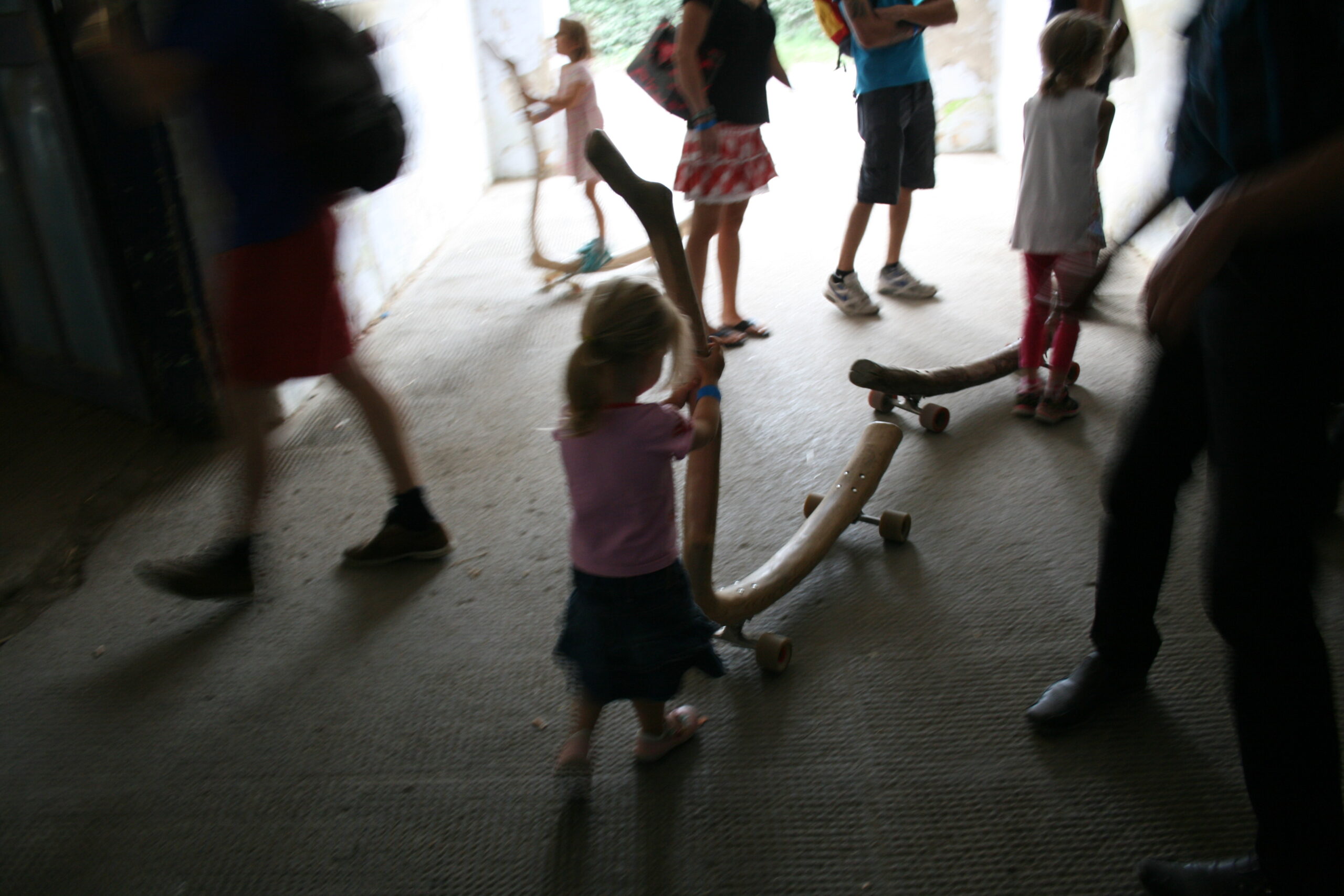
Mimic´s (Limited Art Edition 2017-2018)
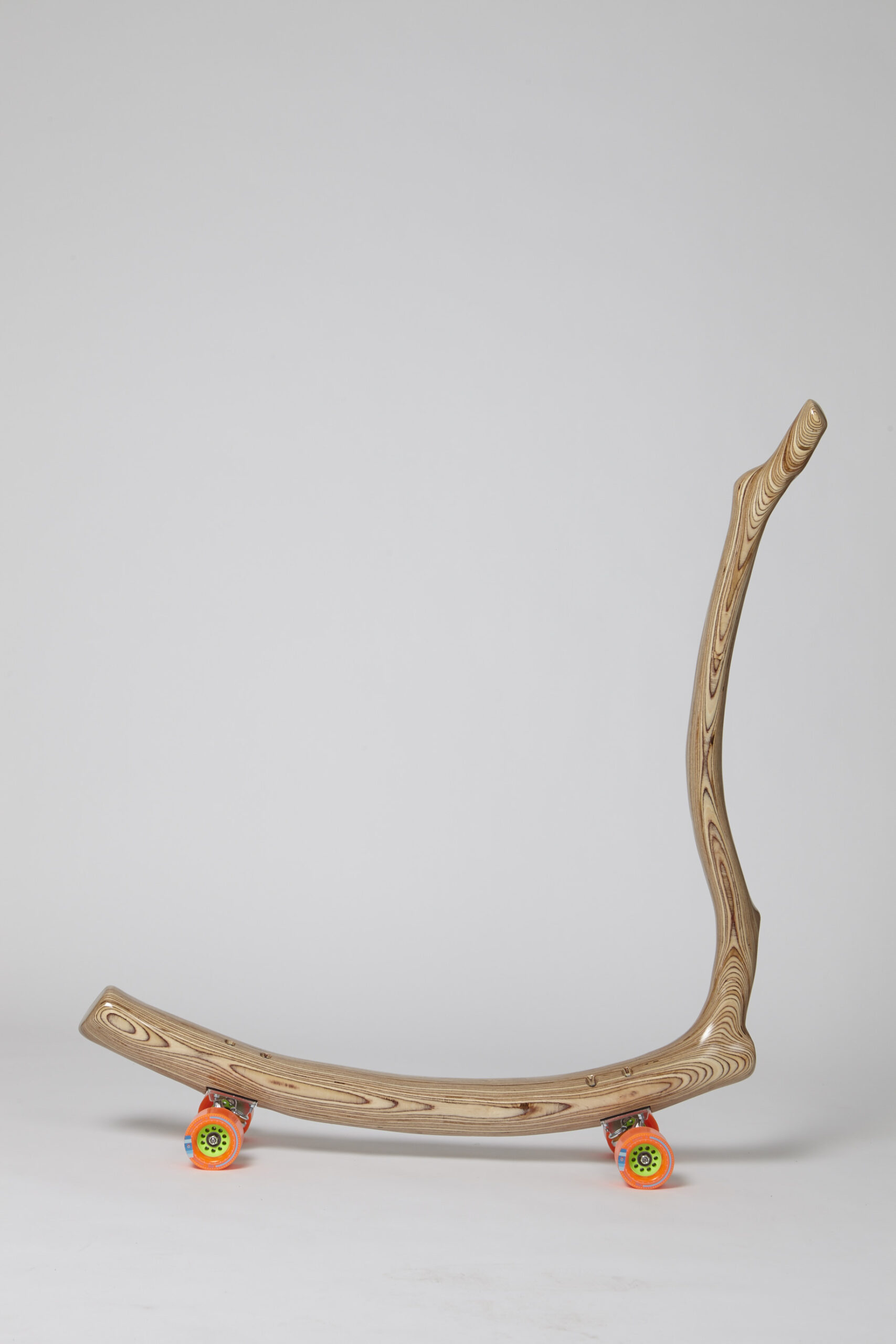
“The Clone” (Limited 9 – Art Edition _ 2017/18)
A limited Art Edition “The Clone / 3rd Generation Mimics / Limited 9” was developed in 2017/18, which was realized in cooperation with the “Angewandte Robotics Lab” and the department for wood technology at the University of Applied Arts Vienna. For this purpose, we still used the original digitalized index of the branch “The Origin,” and the material, form, and size did not change. Layered boards-birch, weight: ca. 7 kg, length: 106 cm, height: 115 cm, width: 27 cm including wheels, diameter: top: 6 cm, bottom: 9 cm, distance between trucks: 60 cm. Milled with the help of an industrial robot and not like before in 2013 and 2015 where a standard milling machine was used.
BUY / Limited 9 Art Edition / CLICK HERE
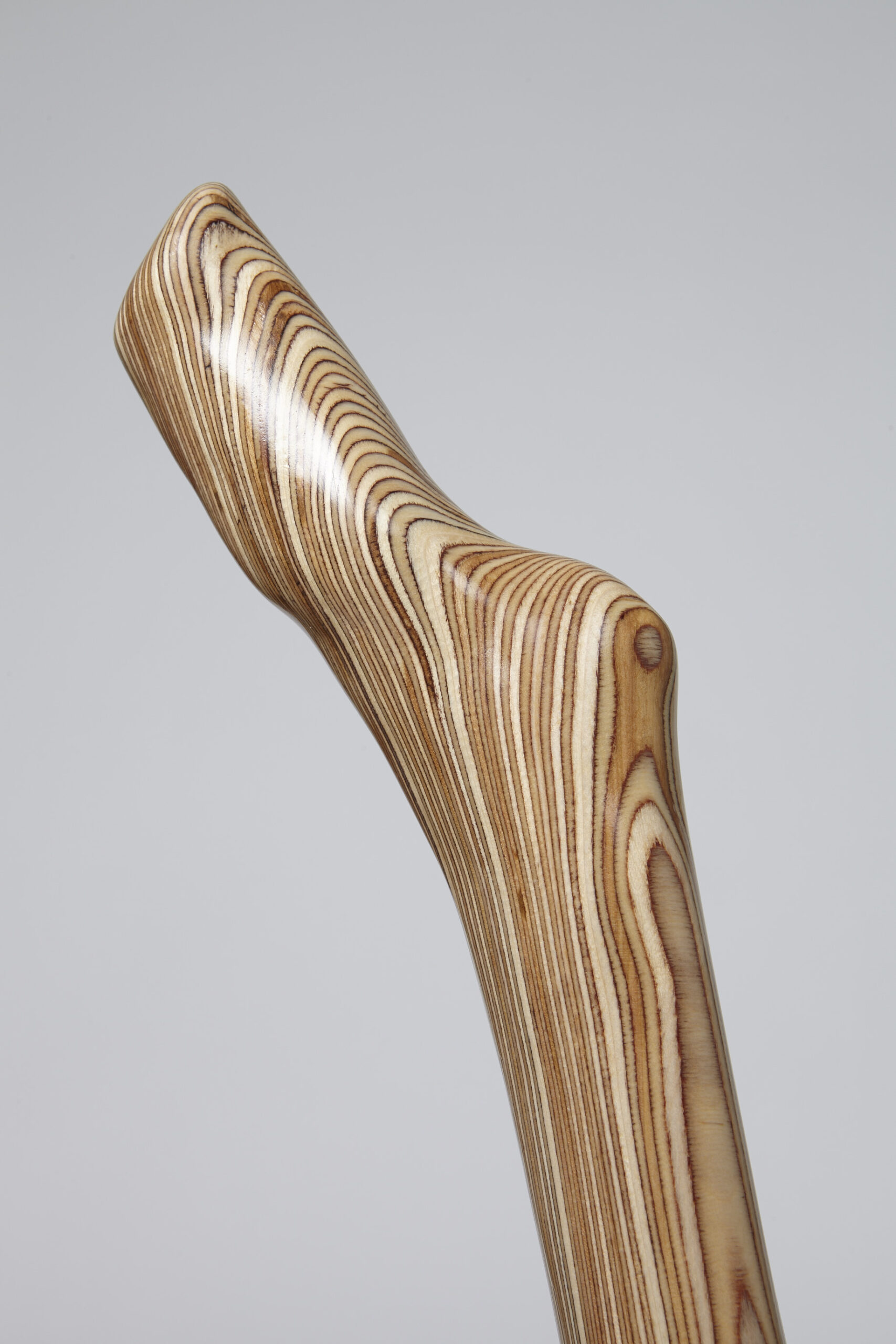
This edition was even more exact and slick. Specially after the long process of sanding, first with the machine and secondly by hand. After sanding, each piece was coated twice. We did it for the protection from dirt and water, so Branchboards from this edition are also waterproof. Using a transparent varnish, we made the individual and richly textured laminate layers visible, which made every piece even more unique and beautiful.
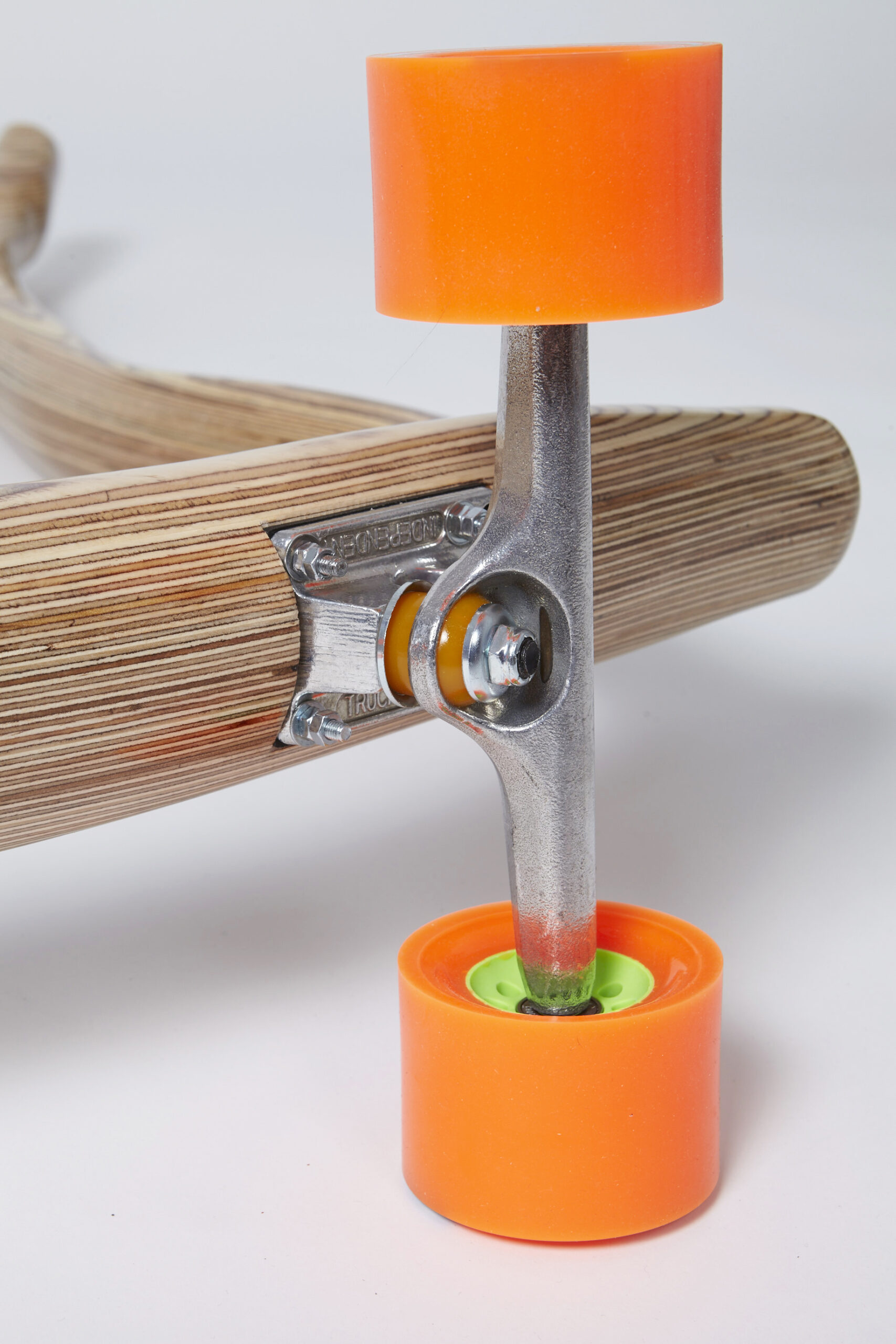
In the year 2017, a piece was acquired through the collection of the Univ. for applied arts and showed at the exhibition “Aesthetics of Change” in the Museum for Applied Arts (MAK) in Vienna. Also in the year 2018 by “Creative Robotics,” Ars Electronica Centrum in Linz, and as an “Innovative Product” by the International Wood, Saw, and Forester Fair presented in Klagenfurt, Austria.
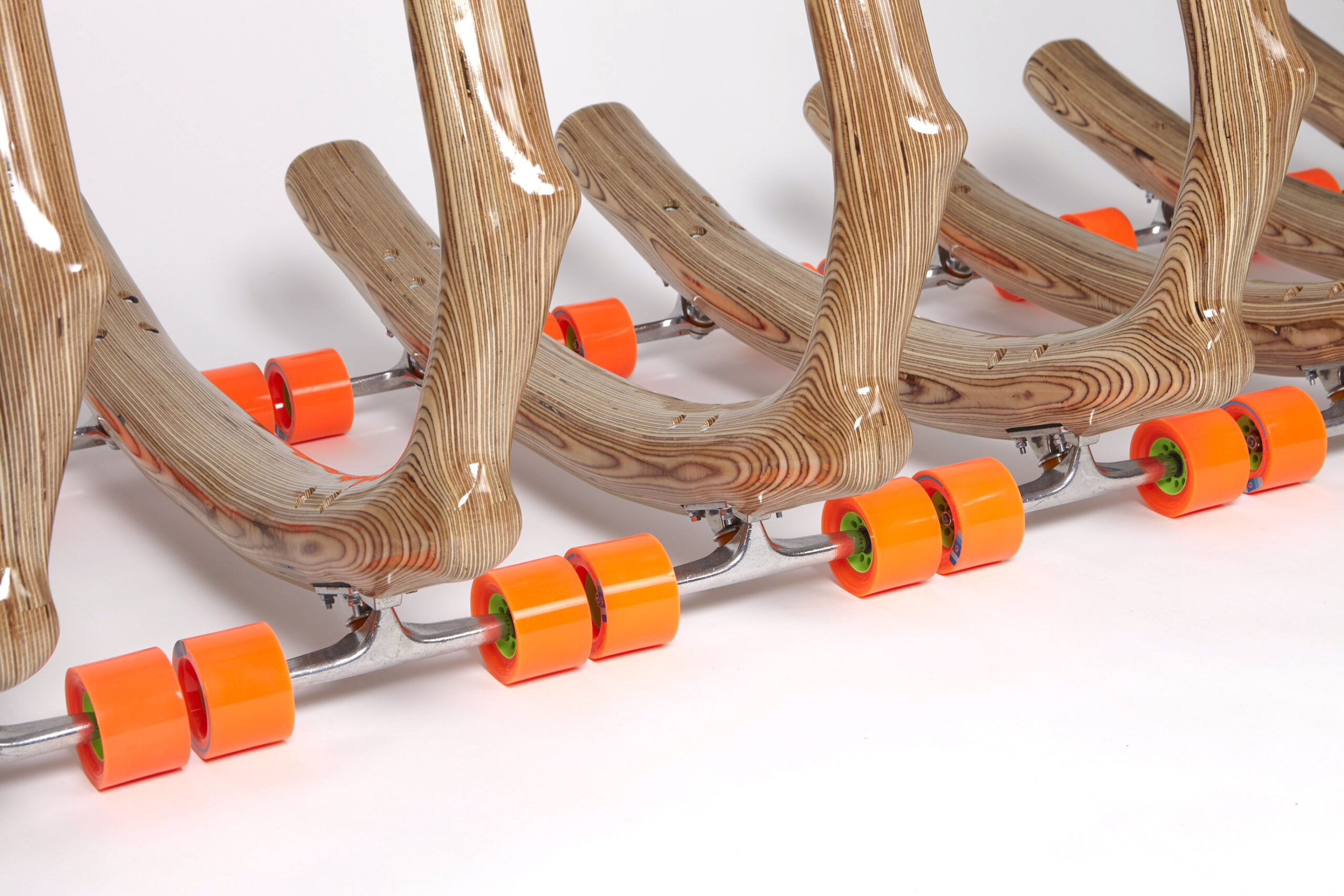
Three more are still available for purchase. The price is €4,000 per piece.
BUY / Limited 9 Art Edition / CLICK HERE
Mimic´s (2024)
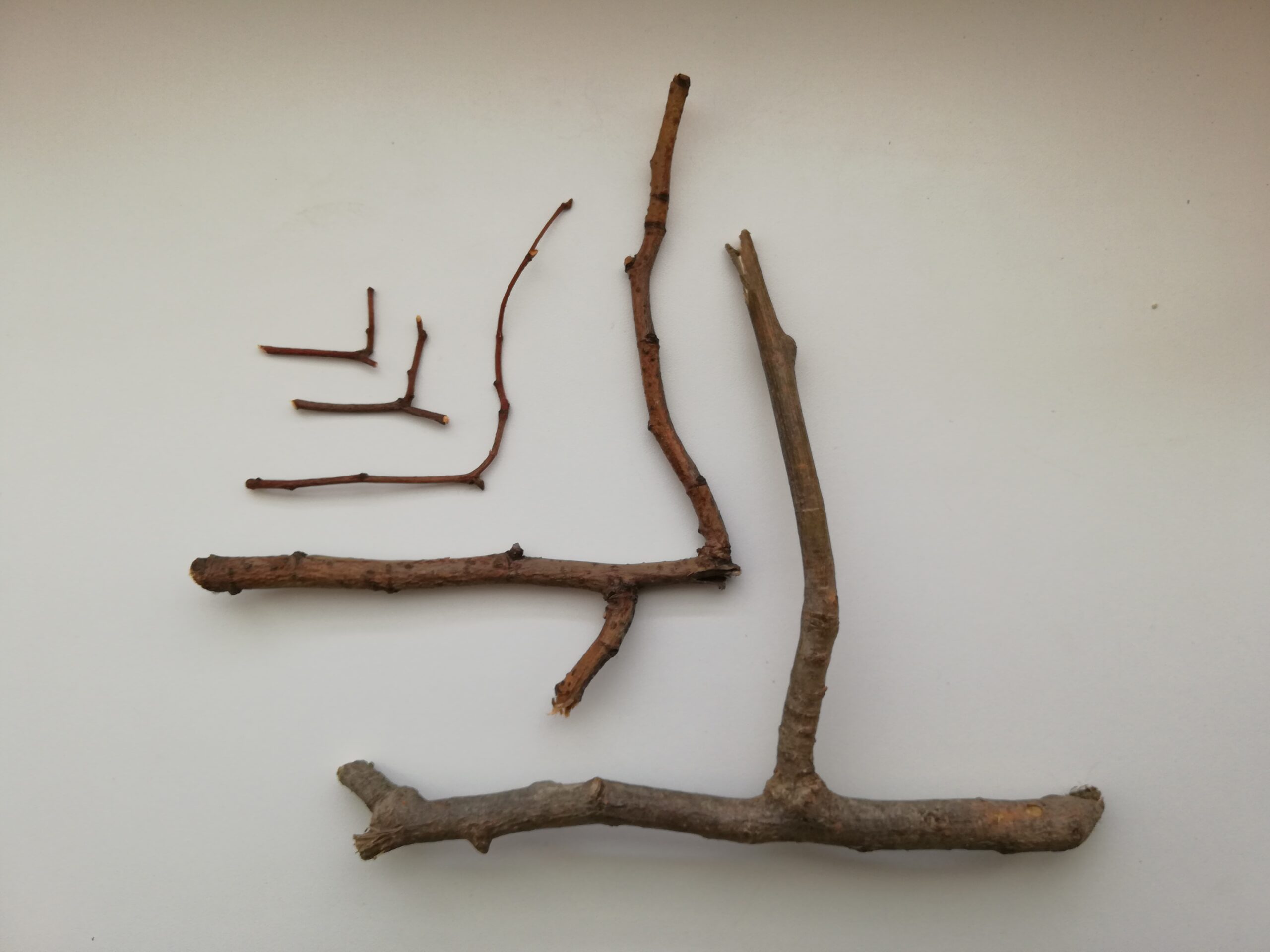
In the current phase of our project (2024), we have the capability to produce custom Branchboards in any shape and size. By utilizing 3D scanning technology, we are able to work not only with naturally grown branches in their original size but also to scale up smaller branches to the optimal body size. Additionally, it’s possible to generate branch shapes using AI, opening up another very interesting aspect.

Until now, our production has been focused on two types of Branchboards, utilizing naturally grown branches of original size and employing well-tested milling techniques. Reproducing natural shapes in various types of wood is entirely achievable. Our next exciting step involves exploring additional production techniques and materials, with a focus on energy efficiency and bio-sustainability.
